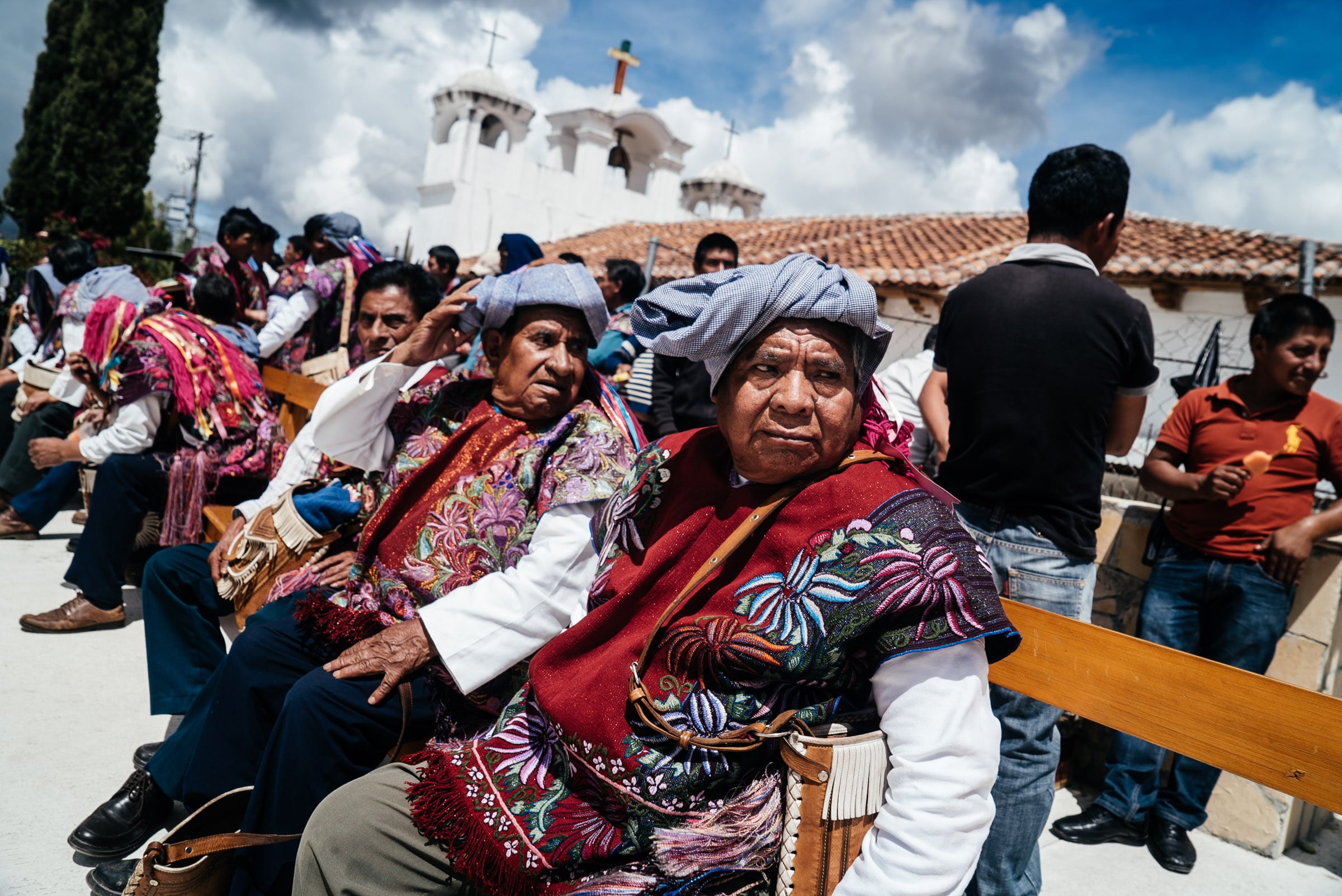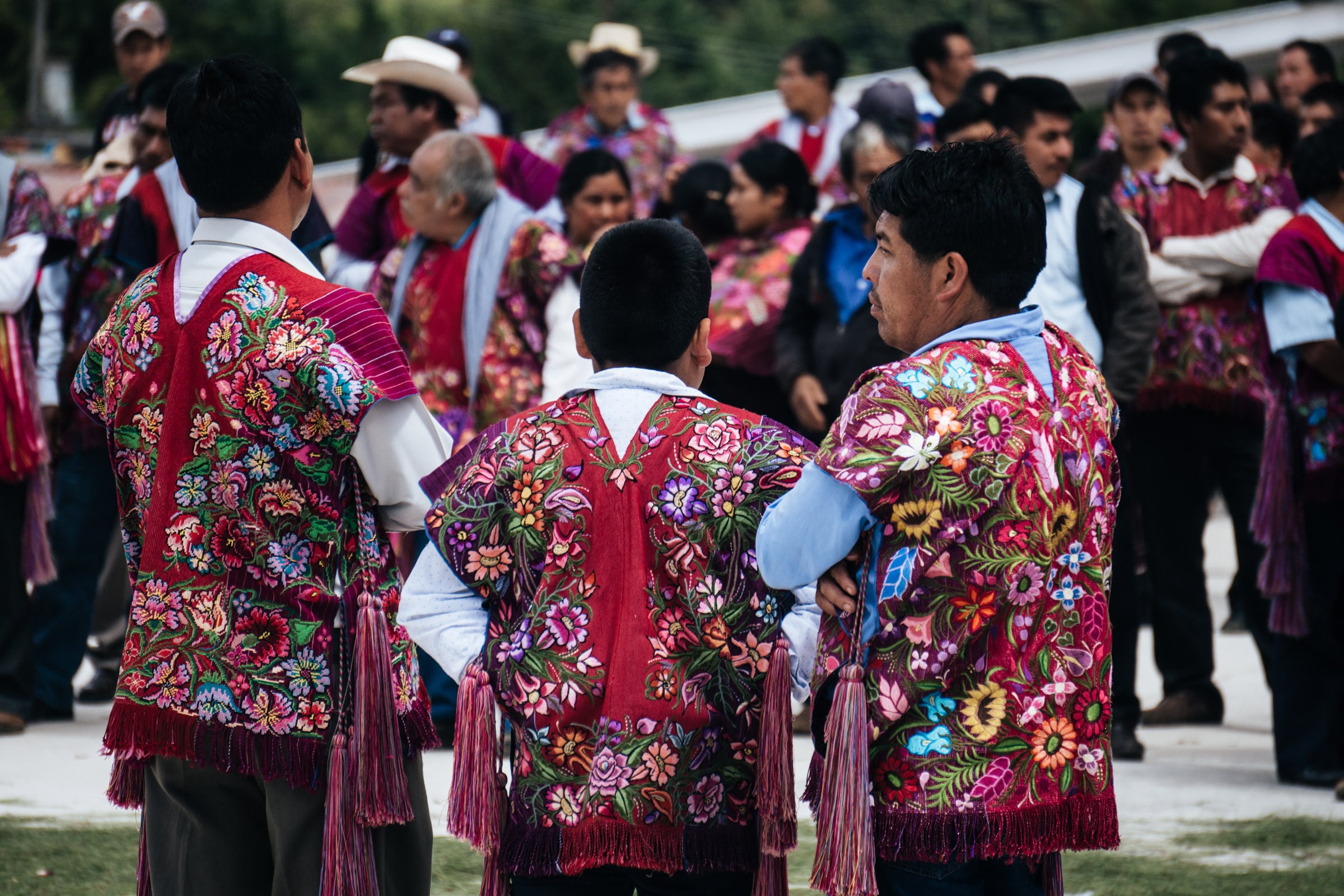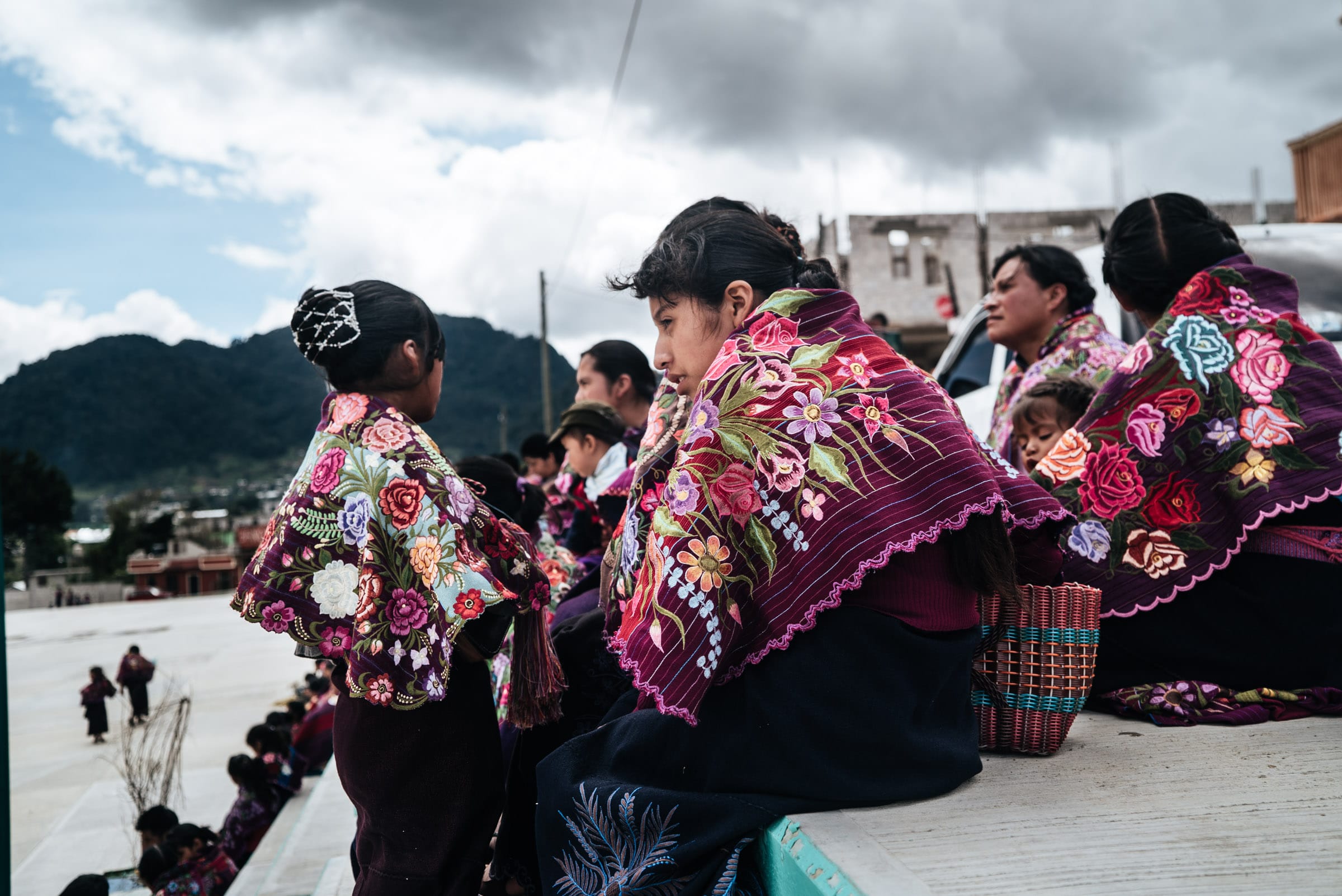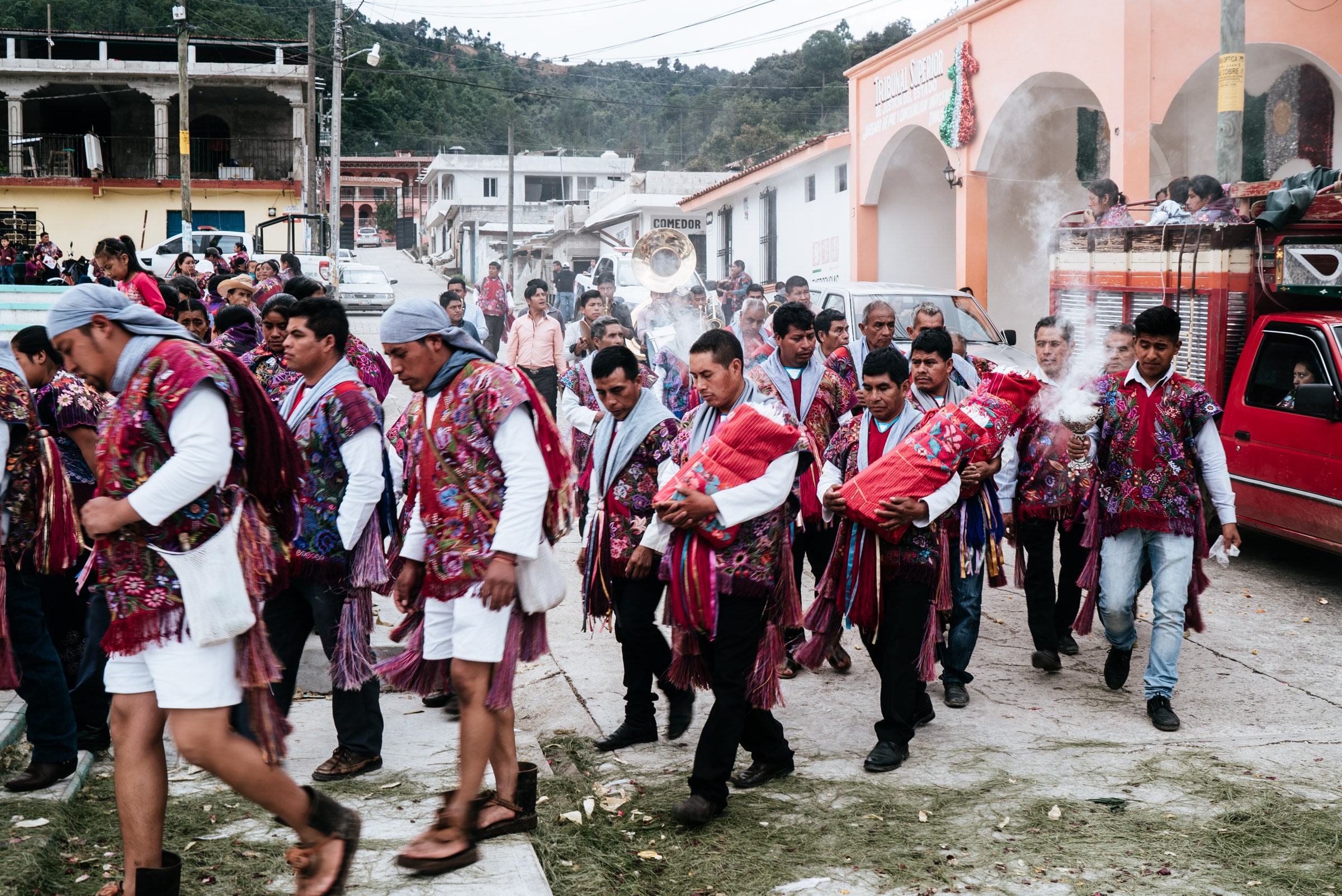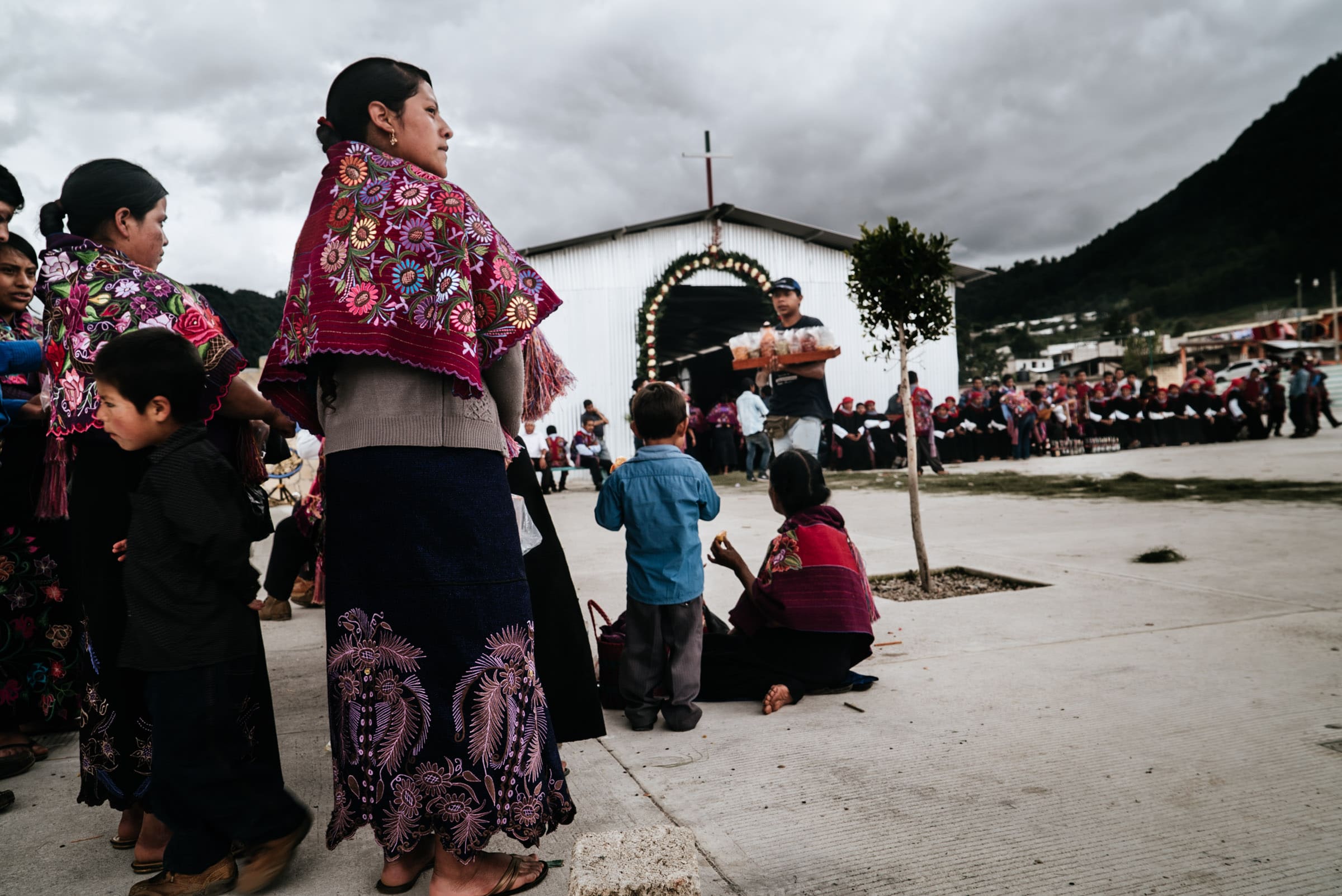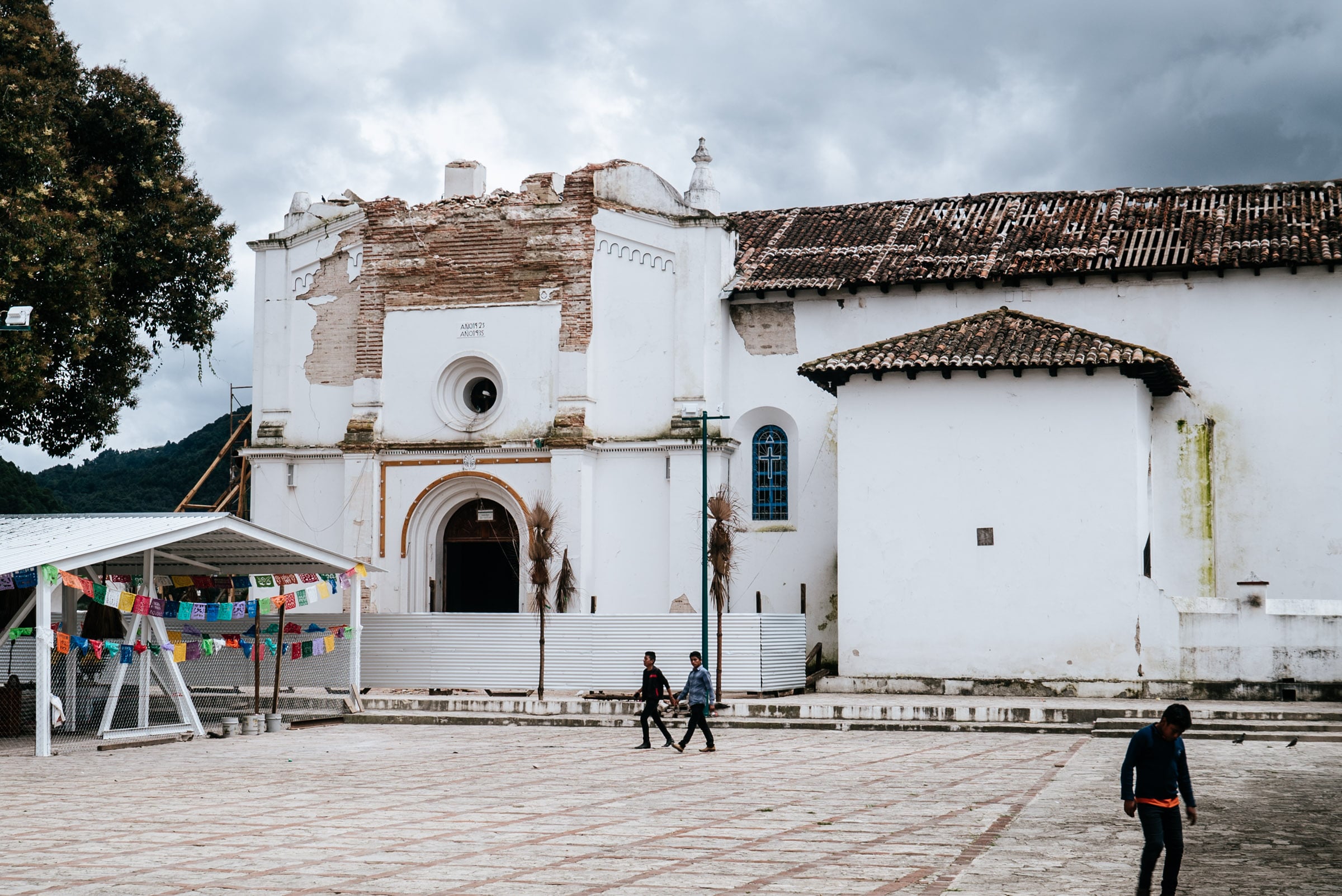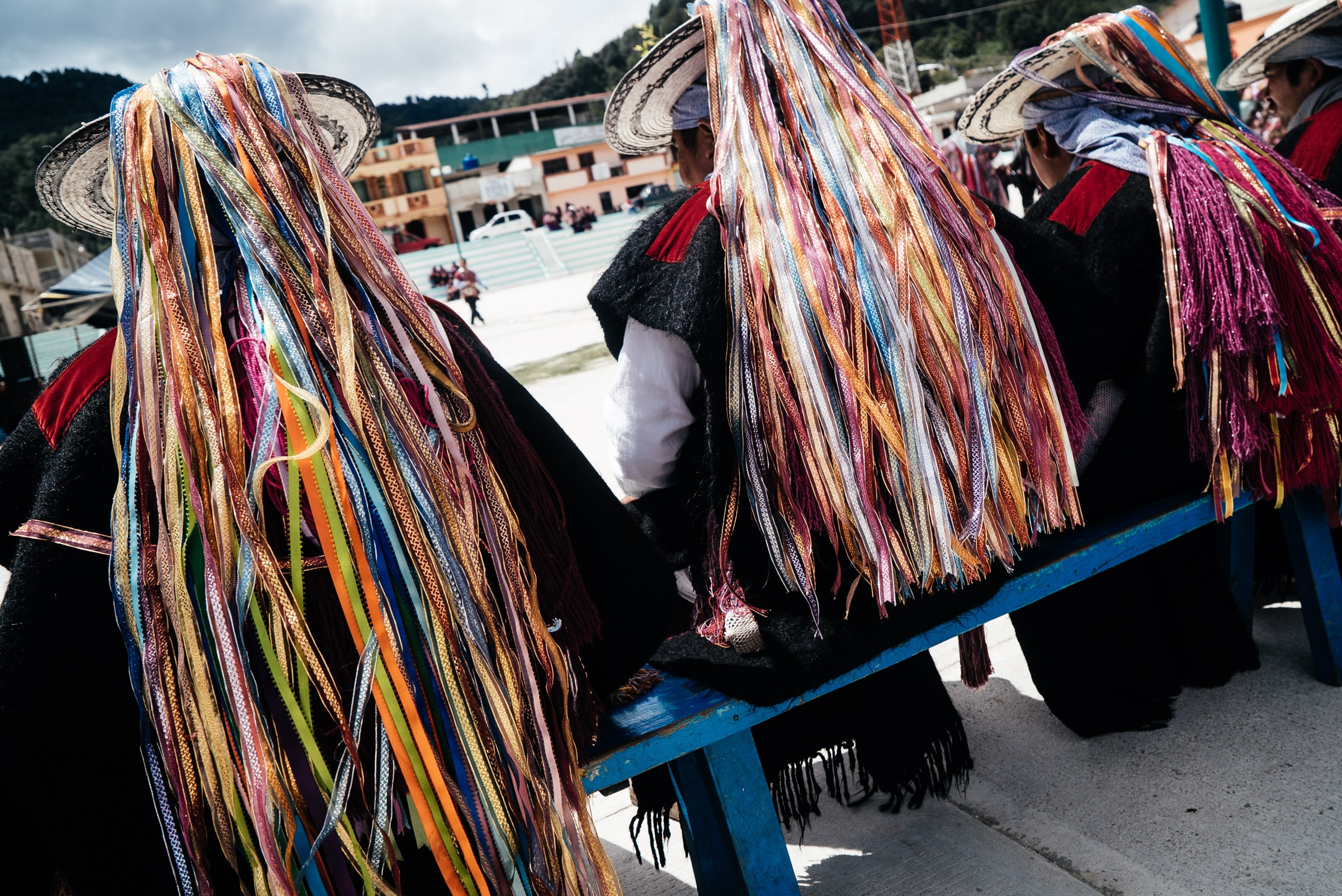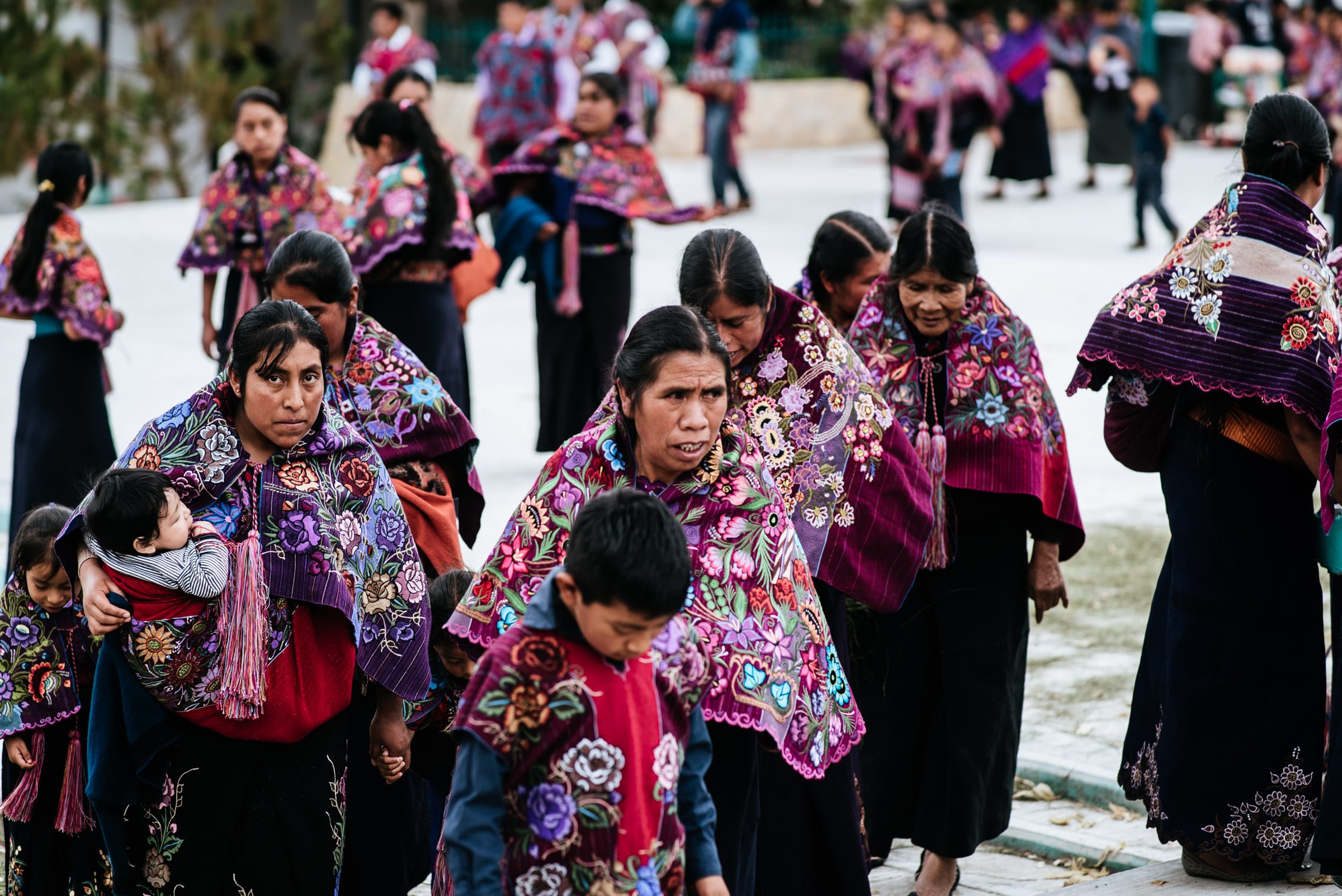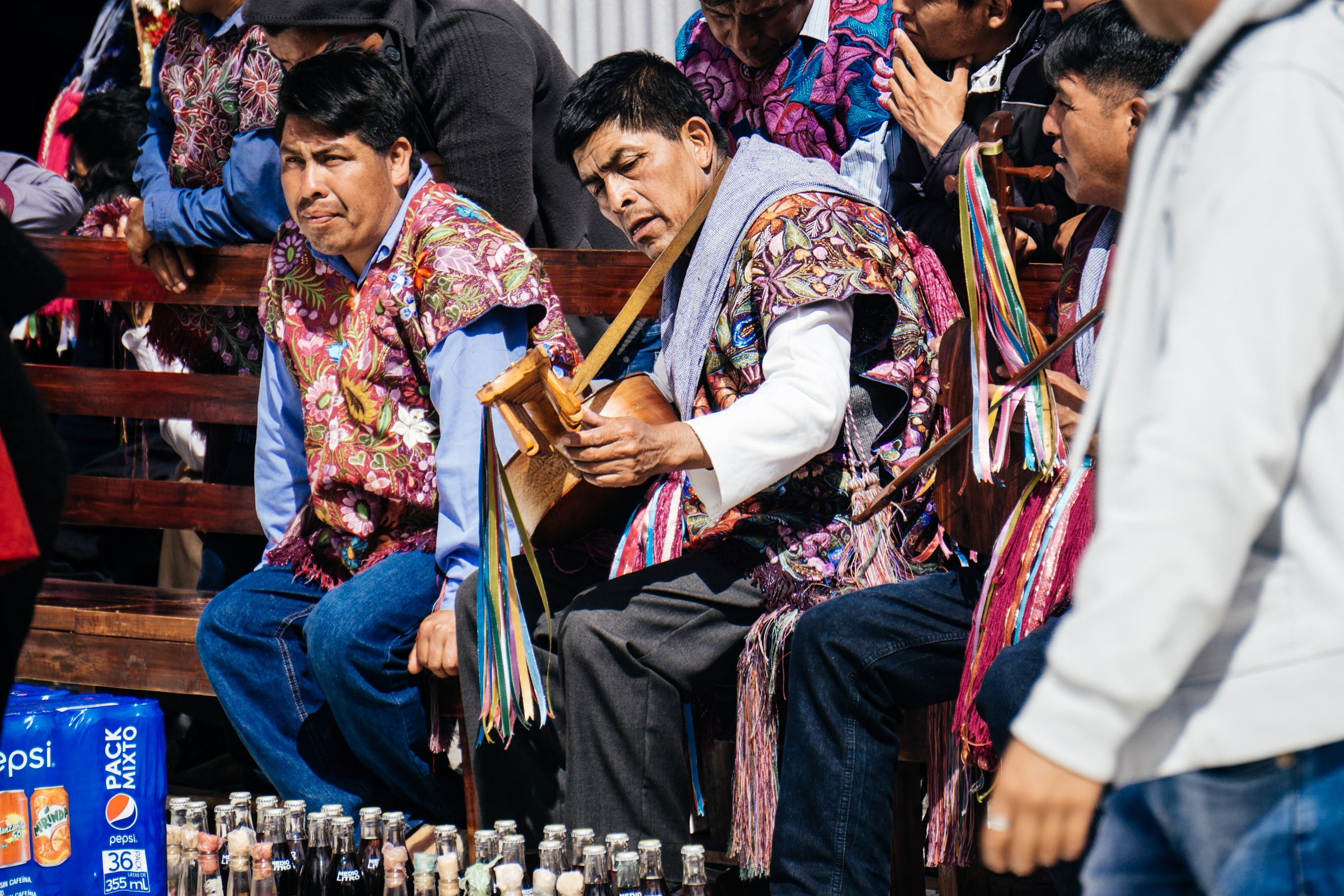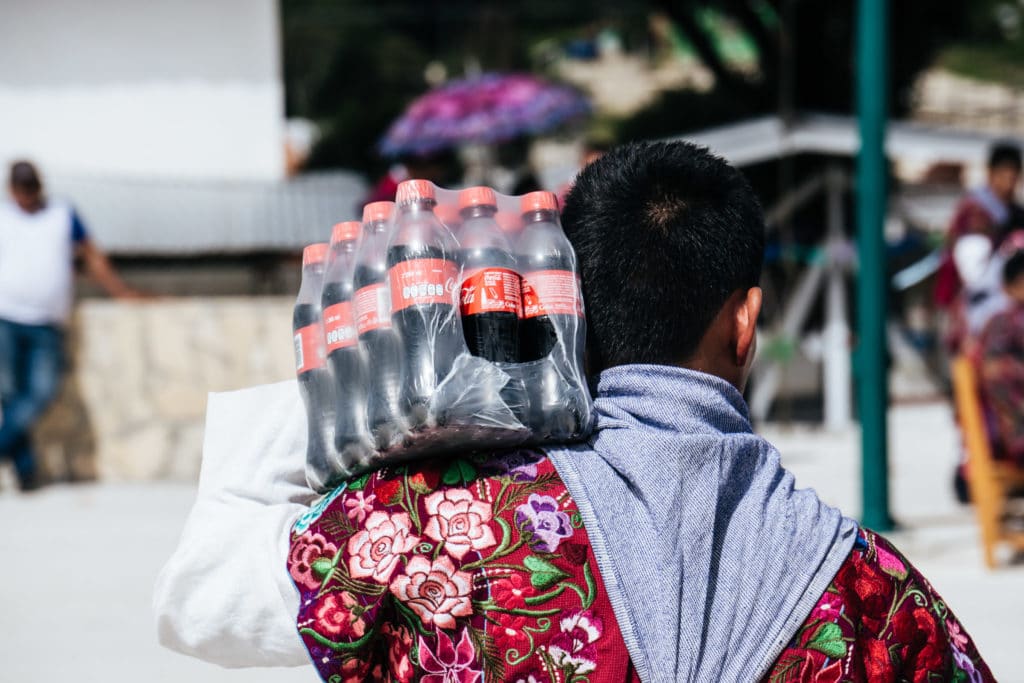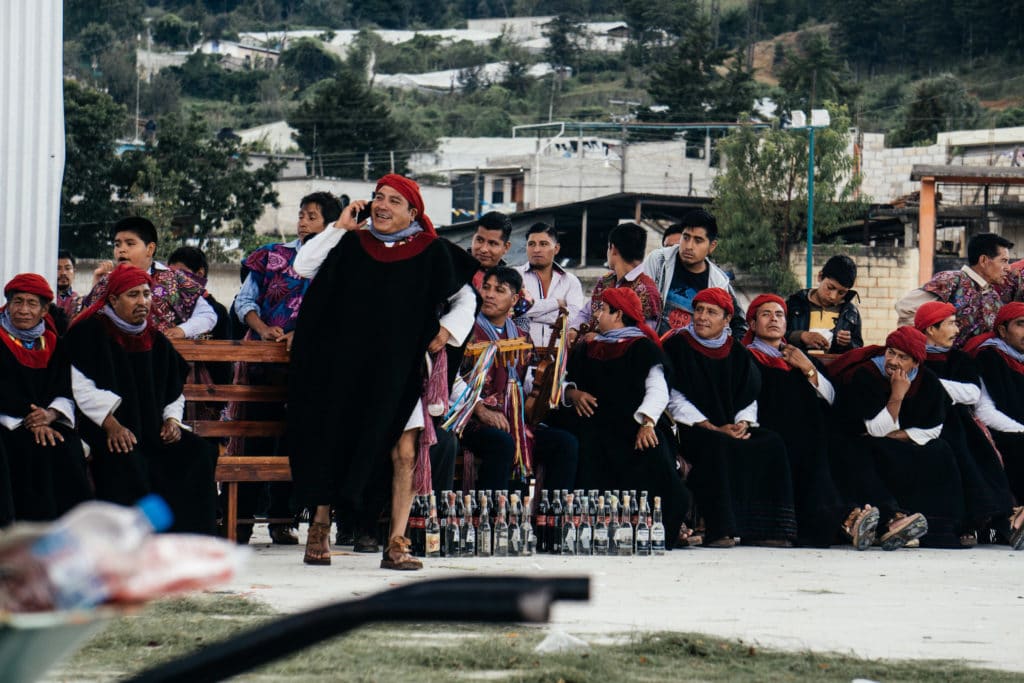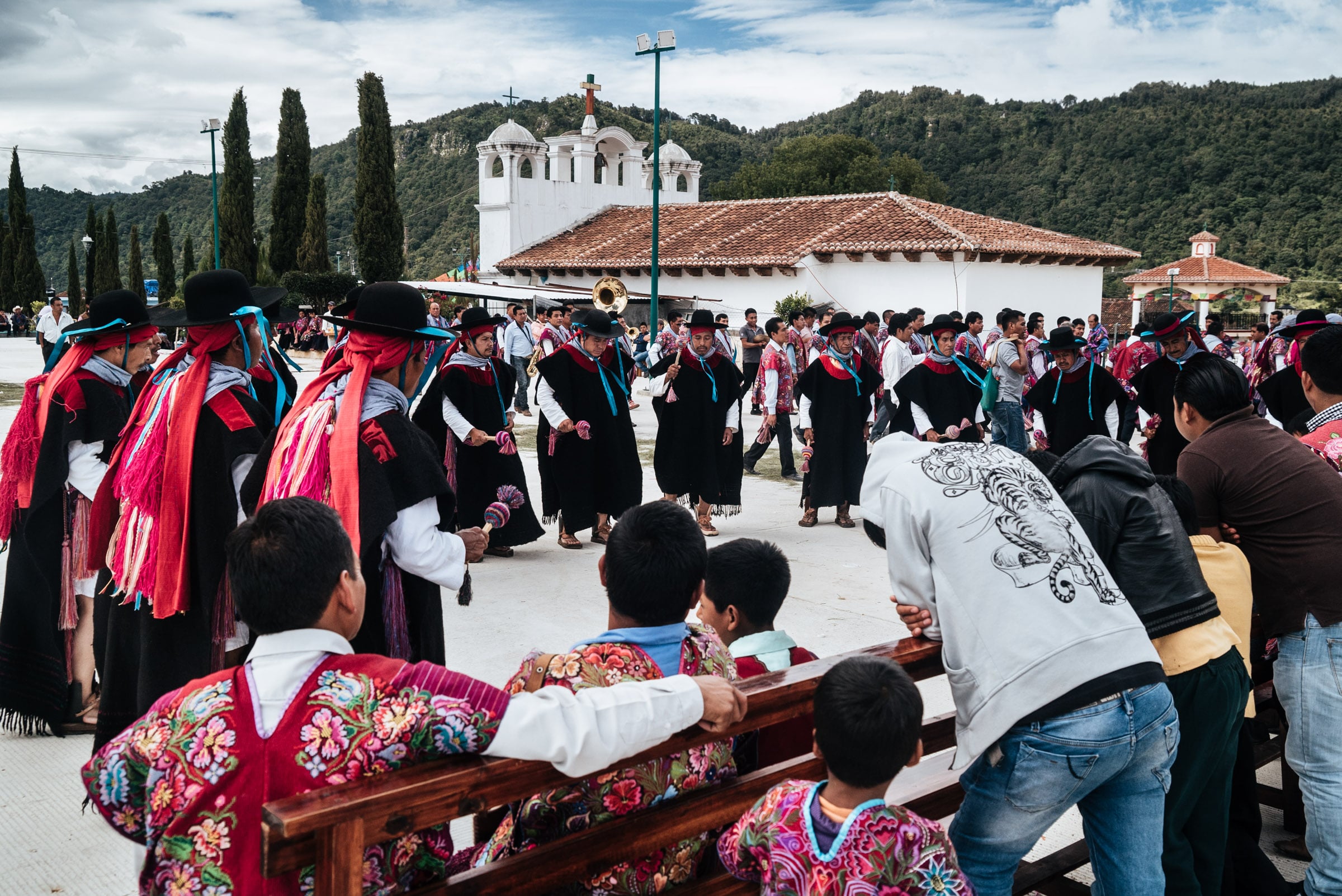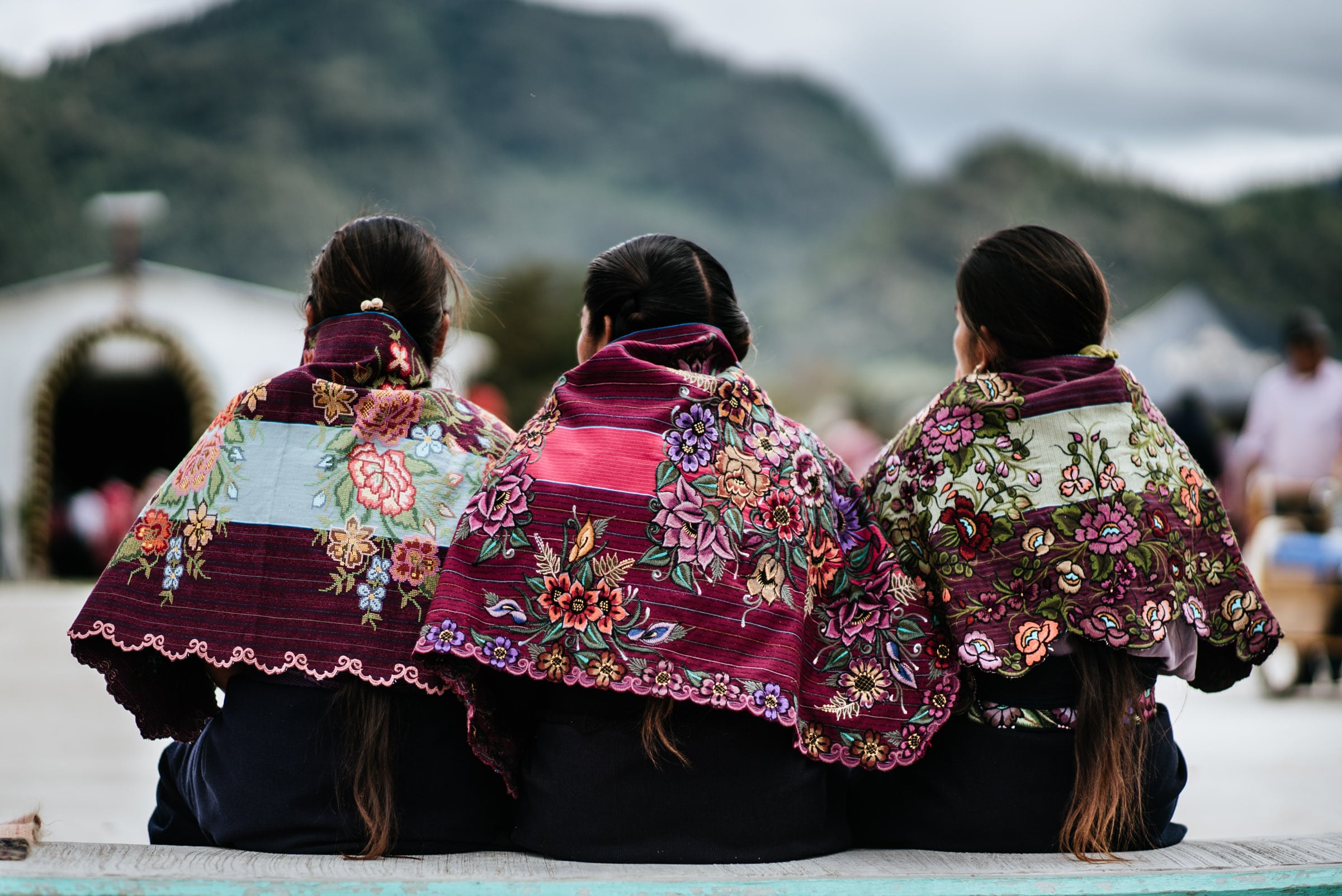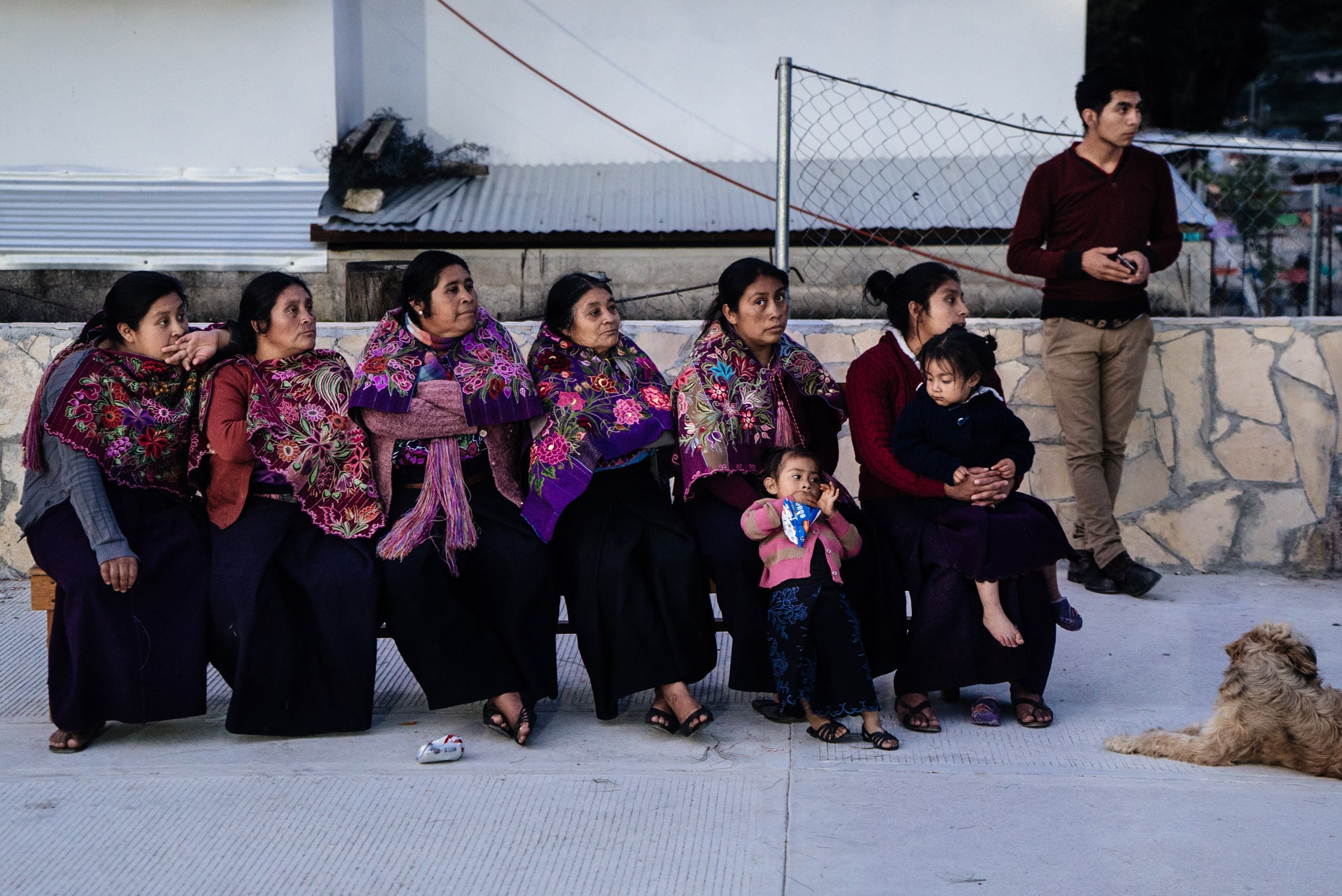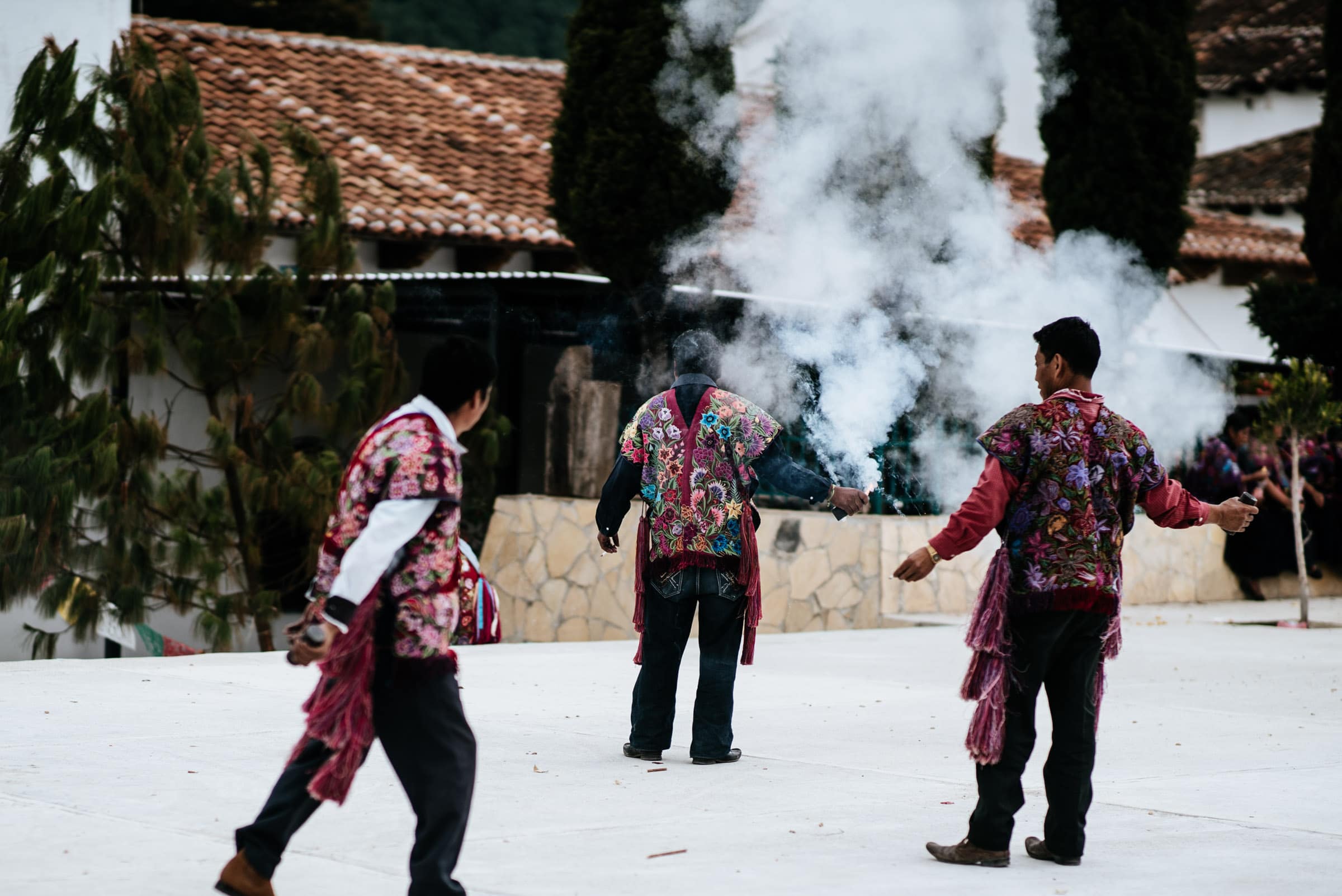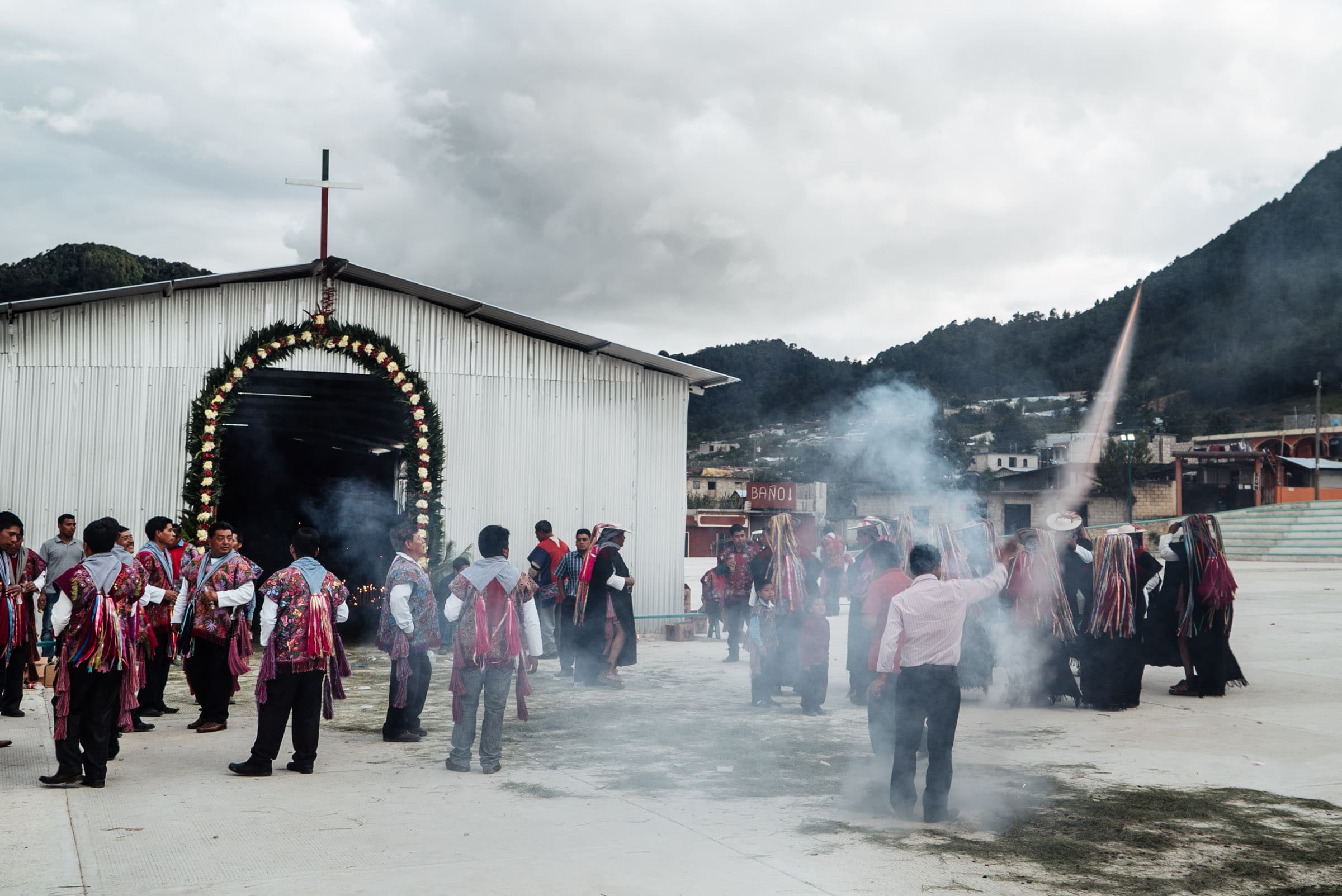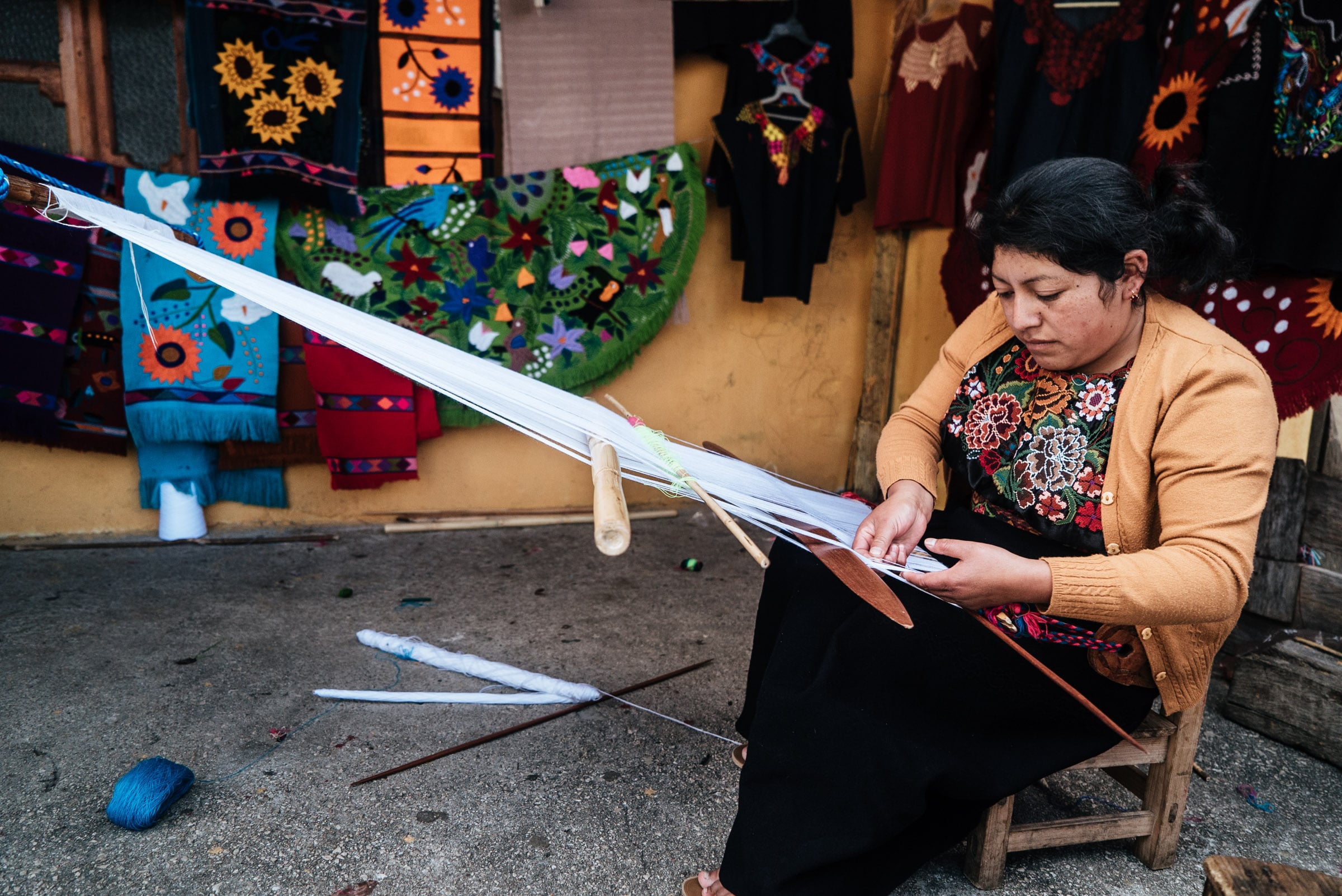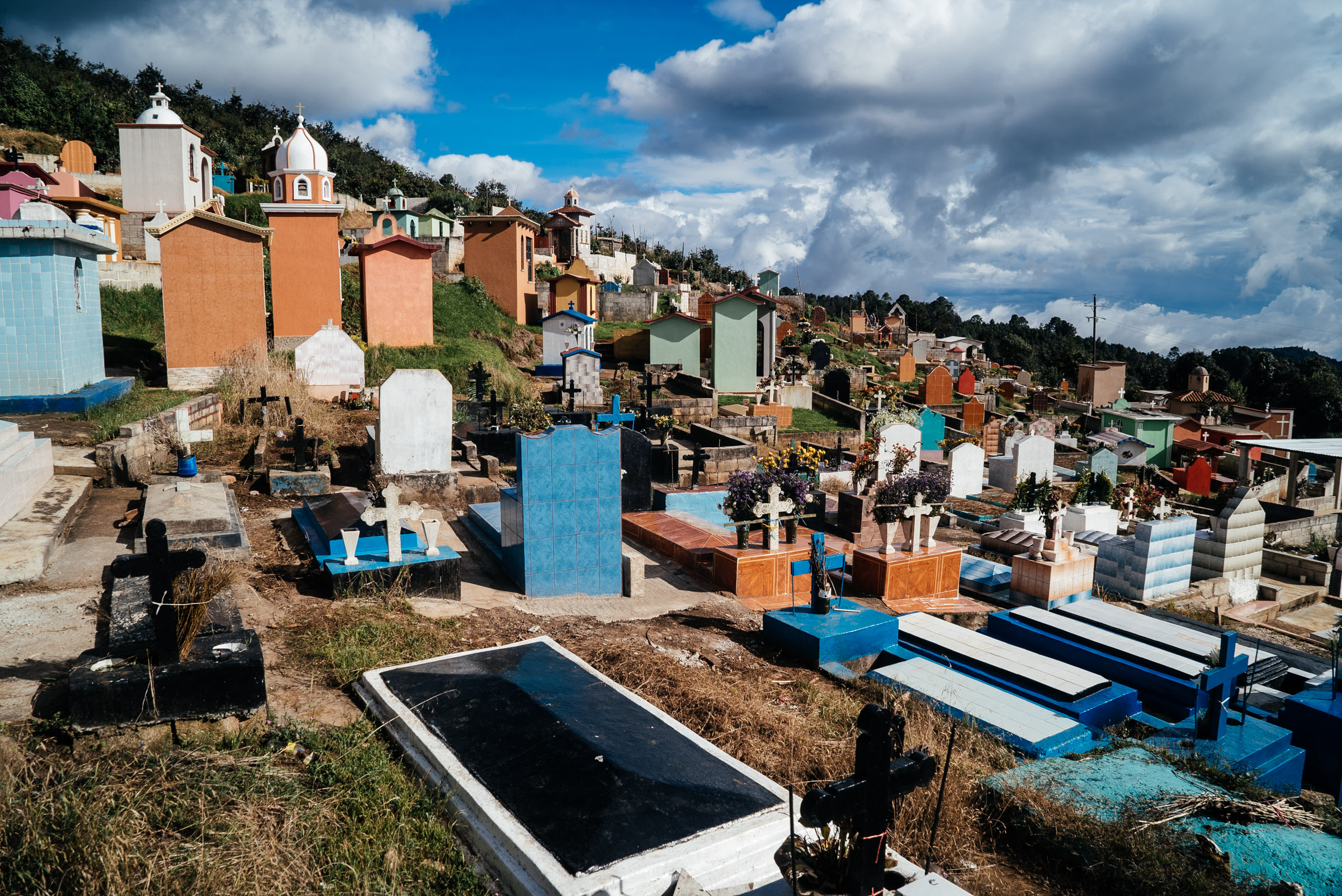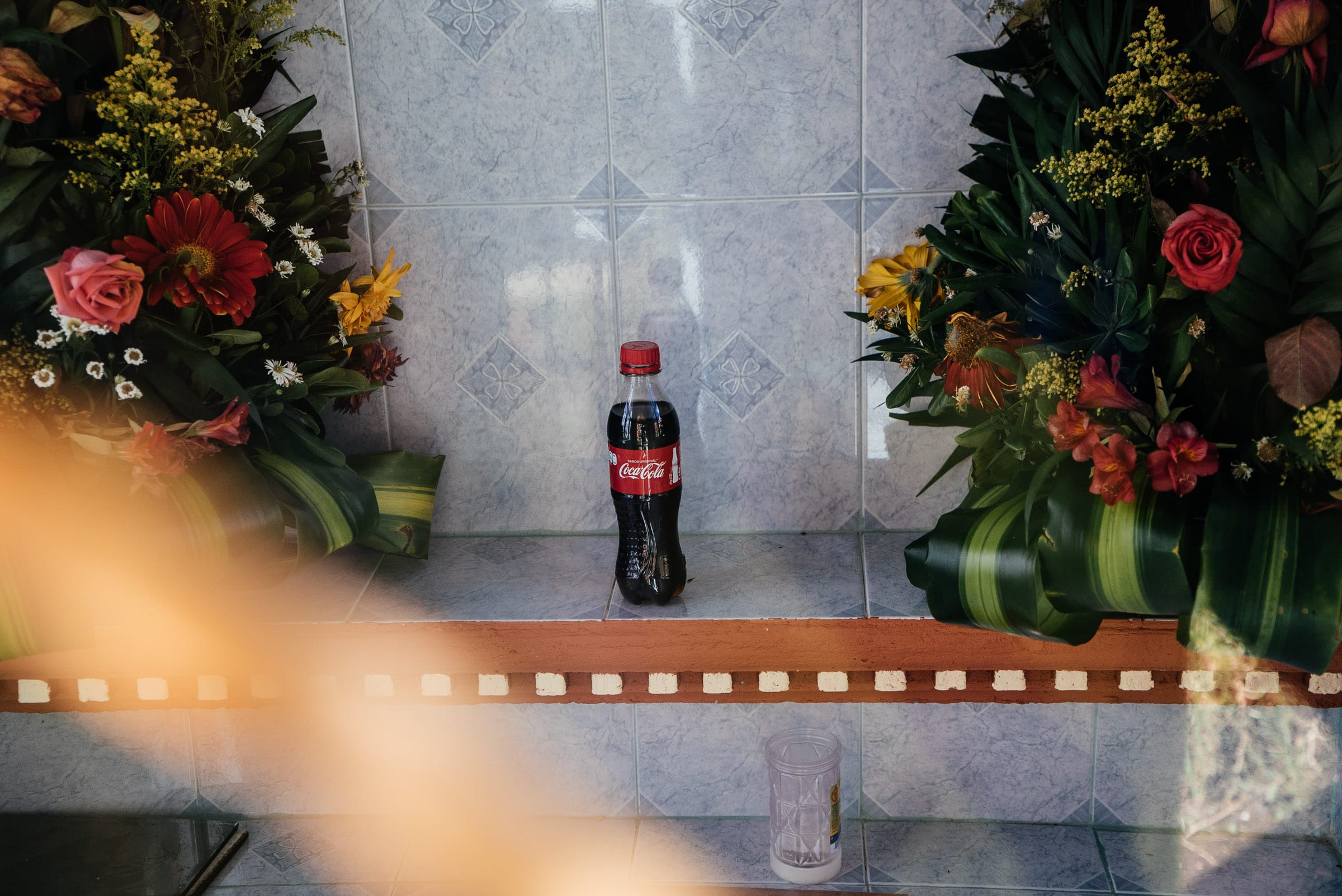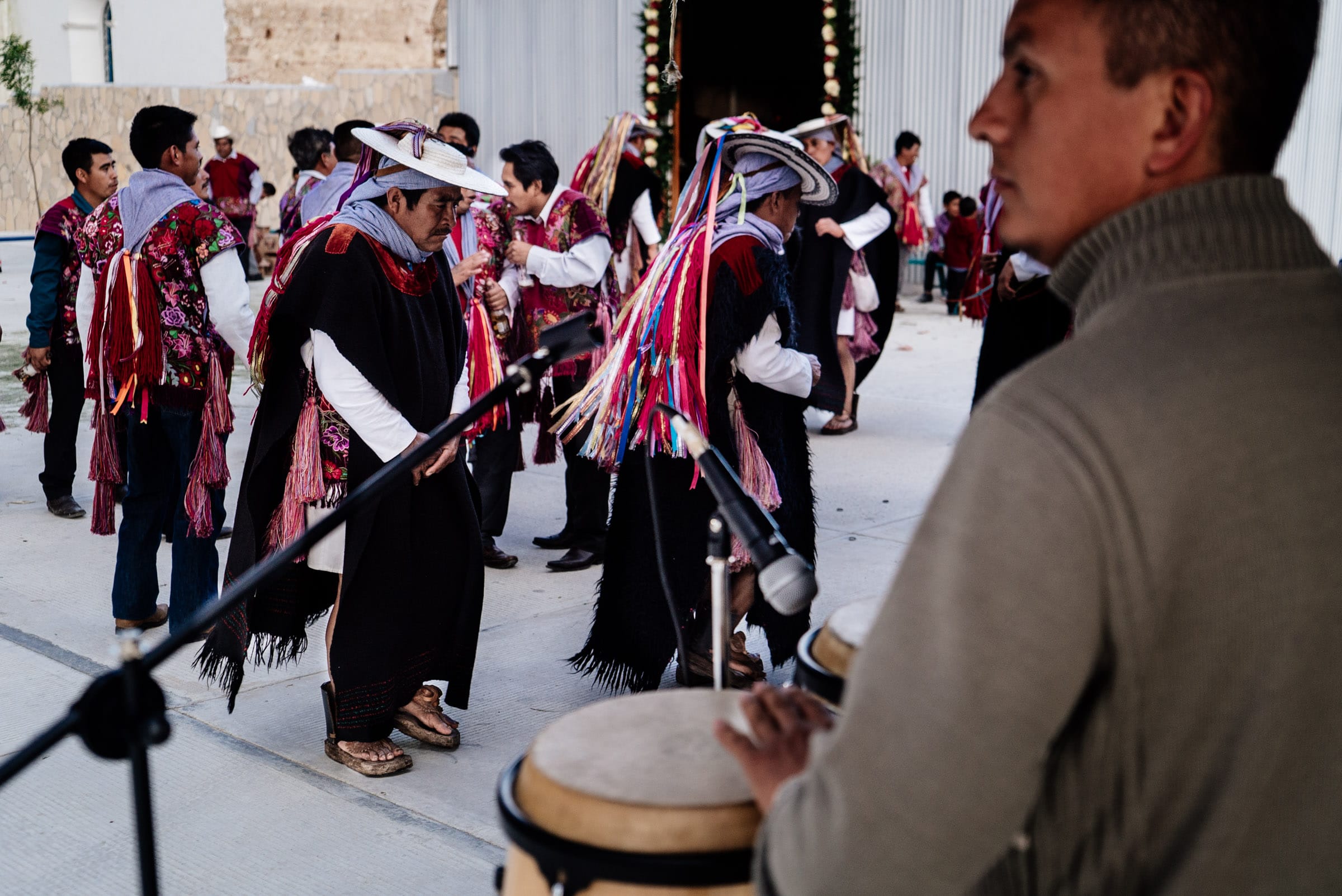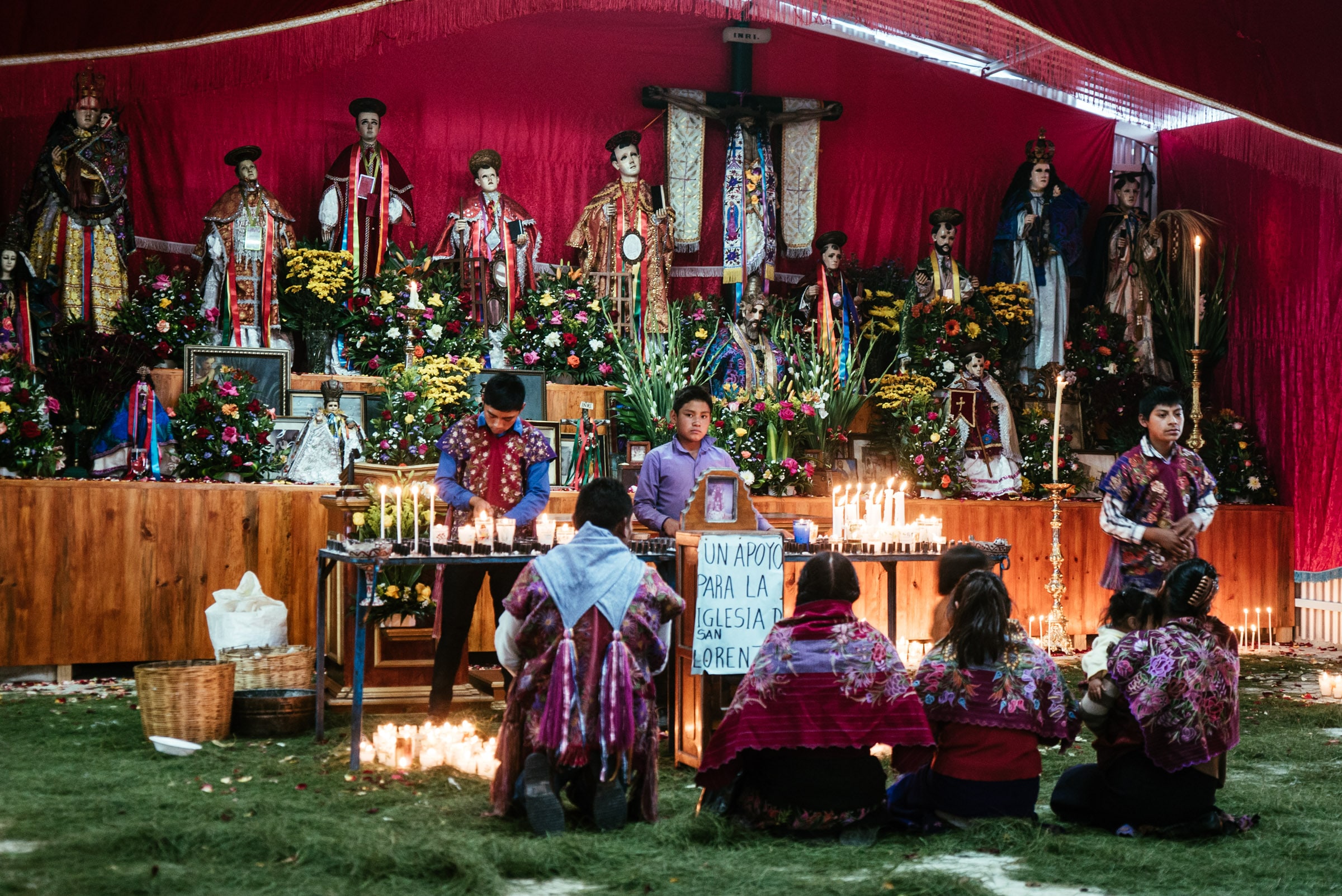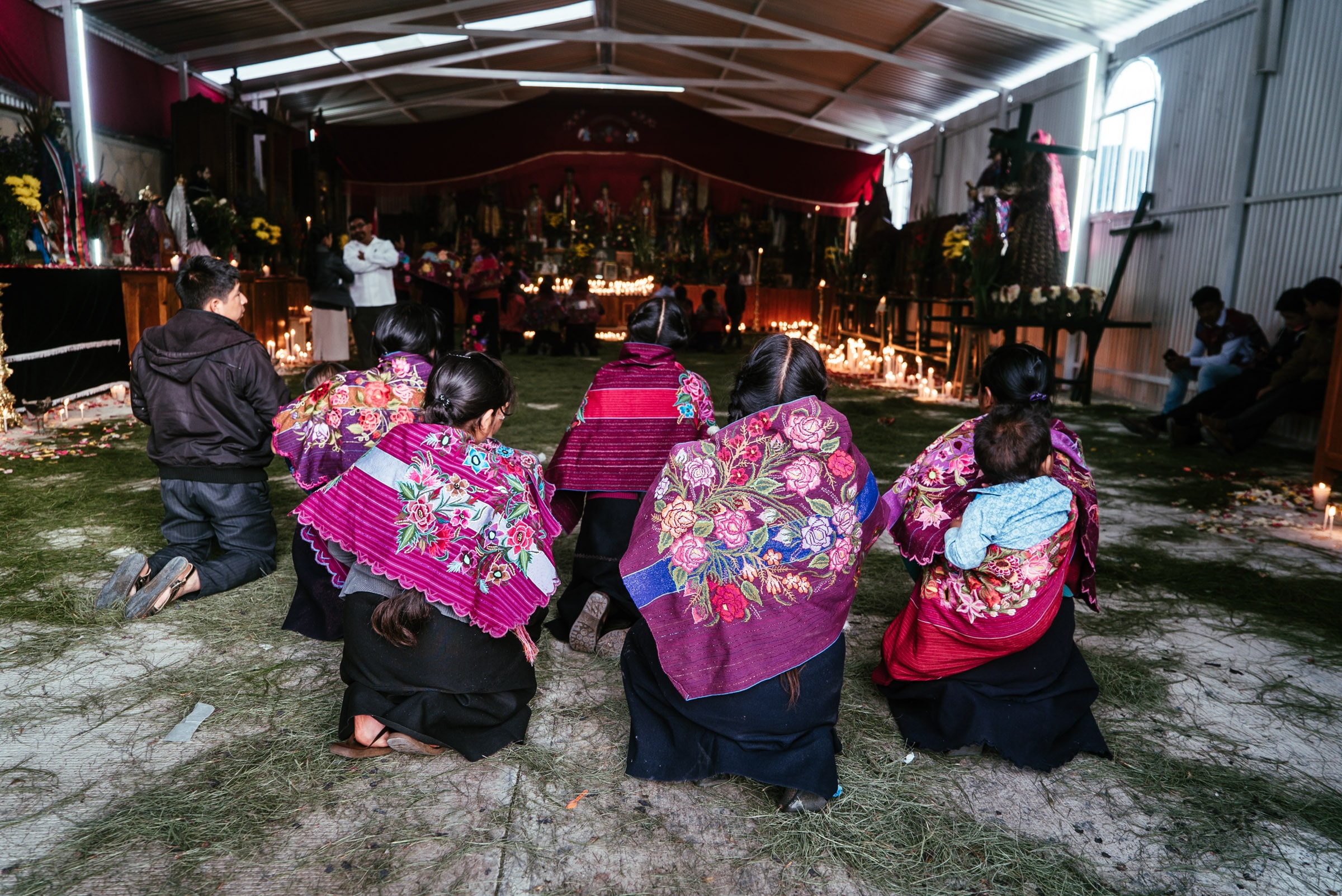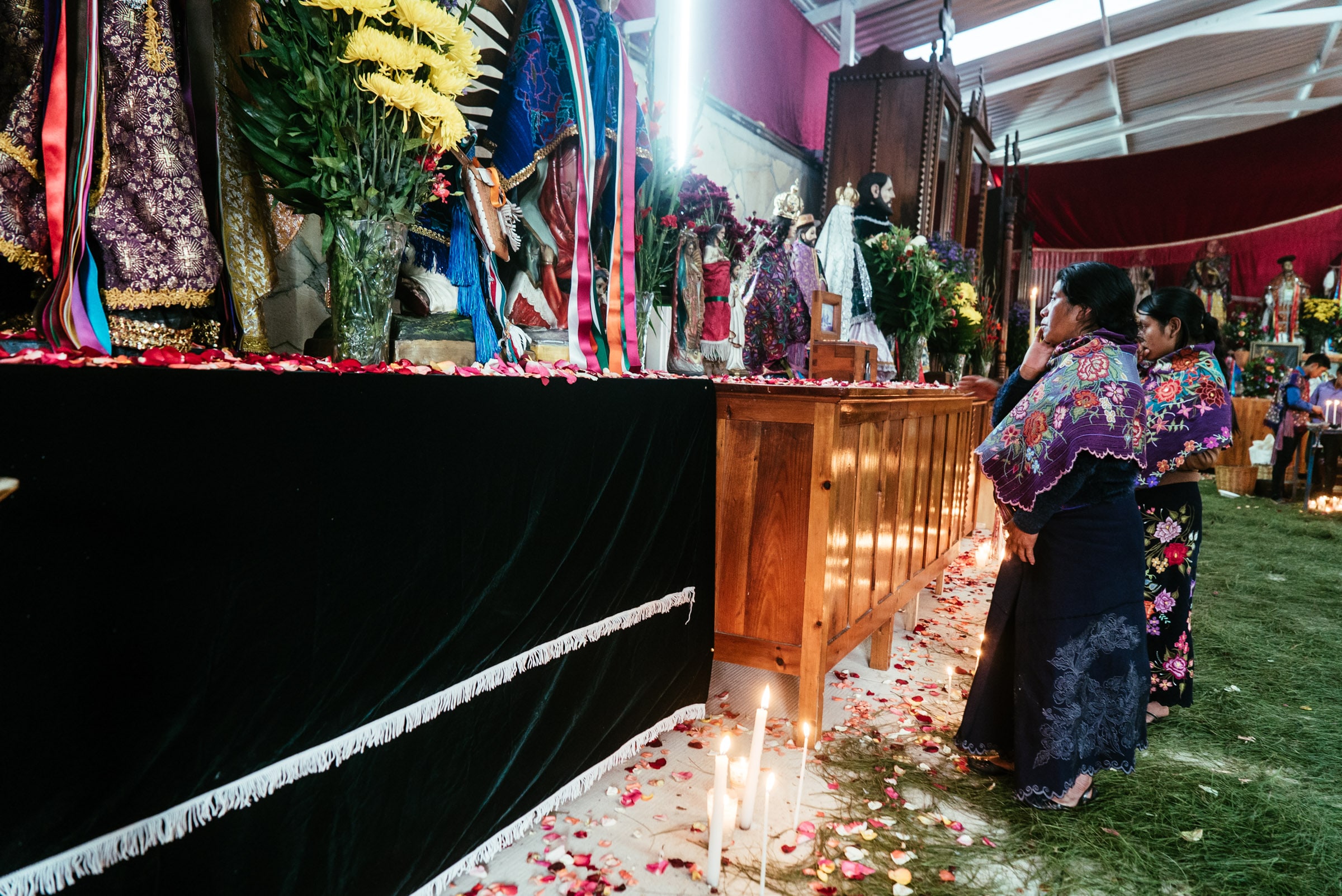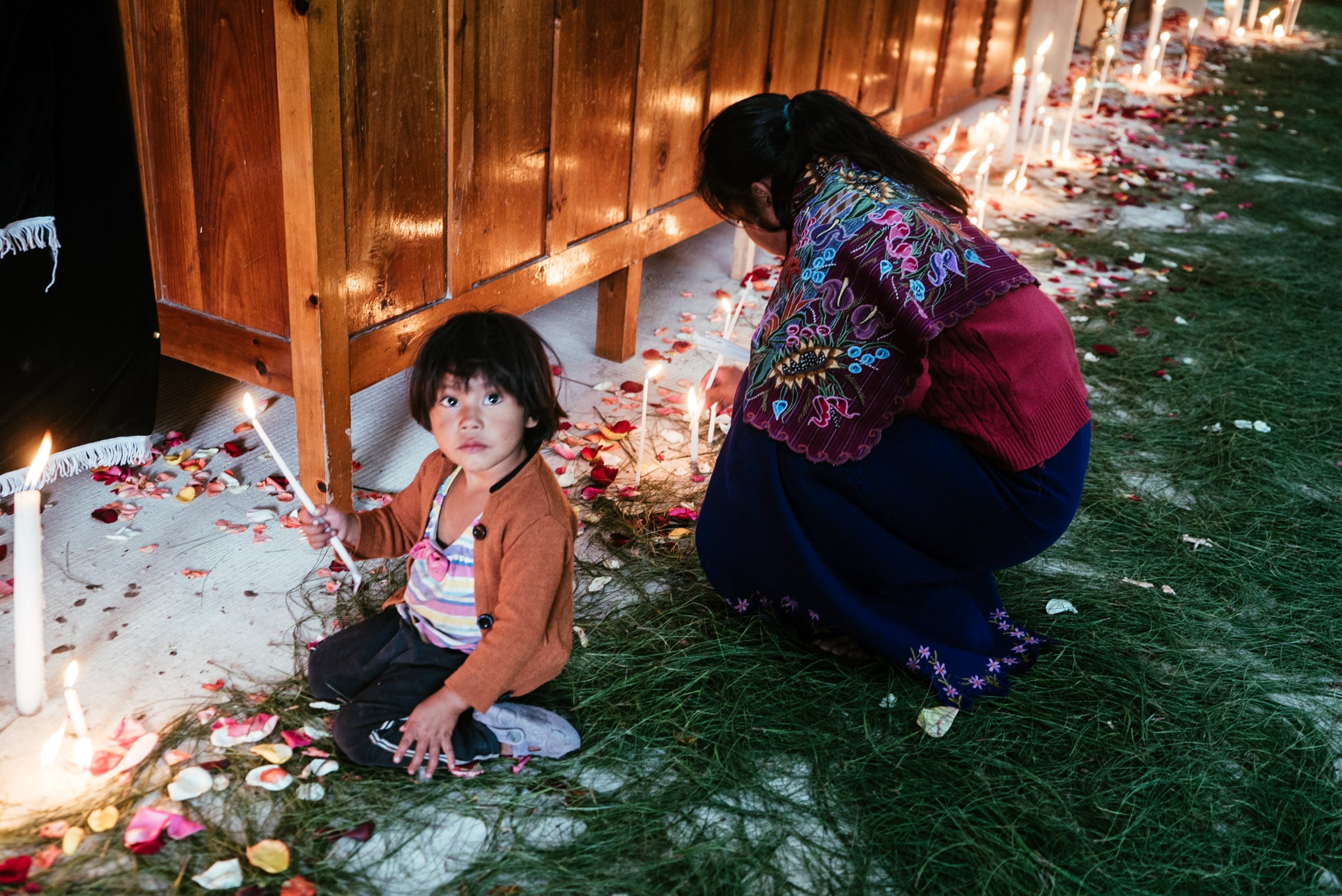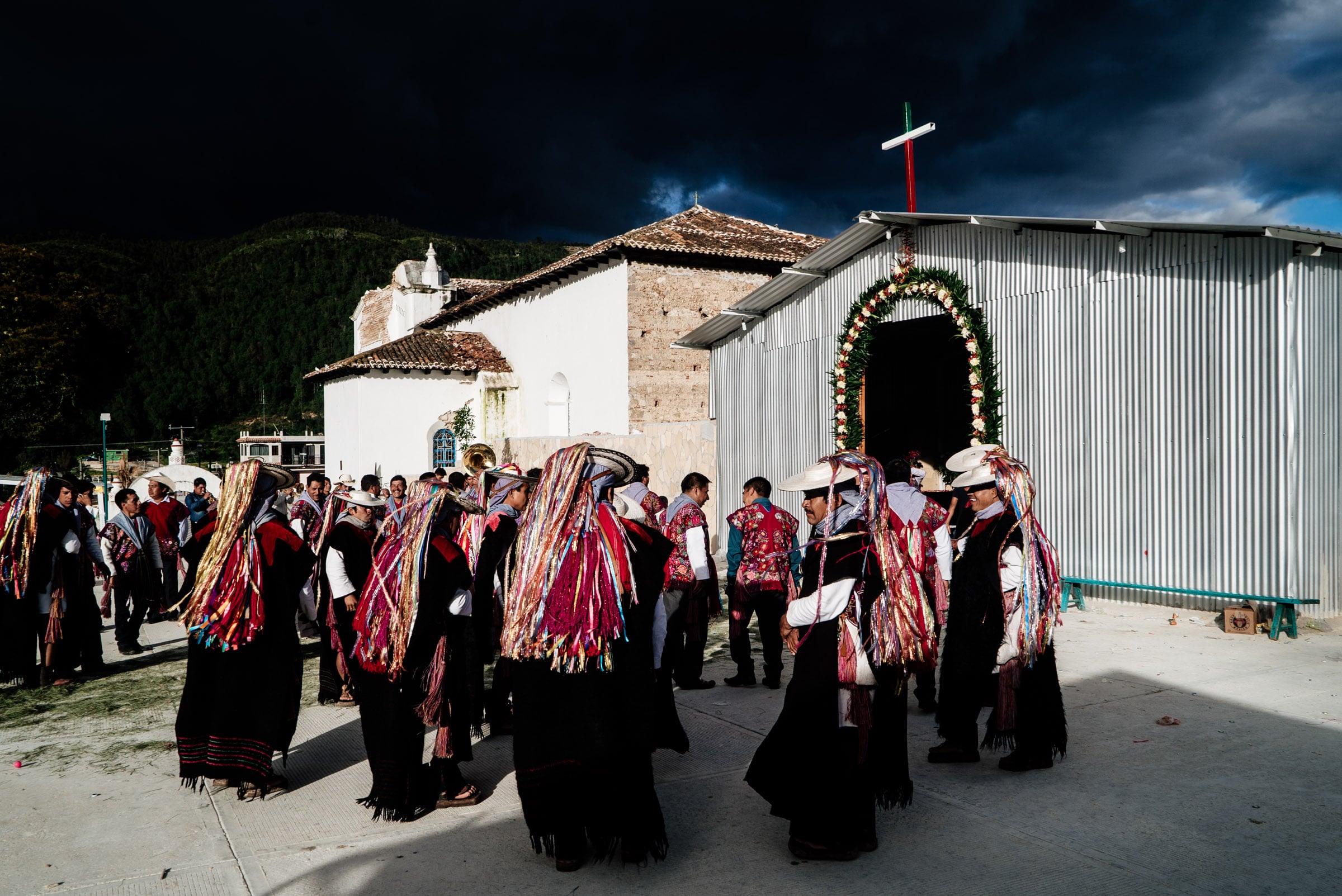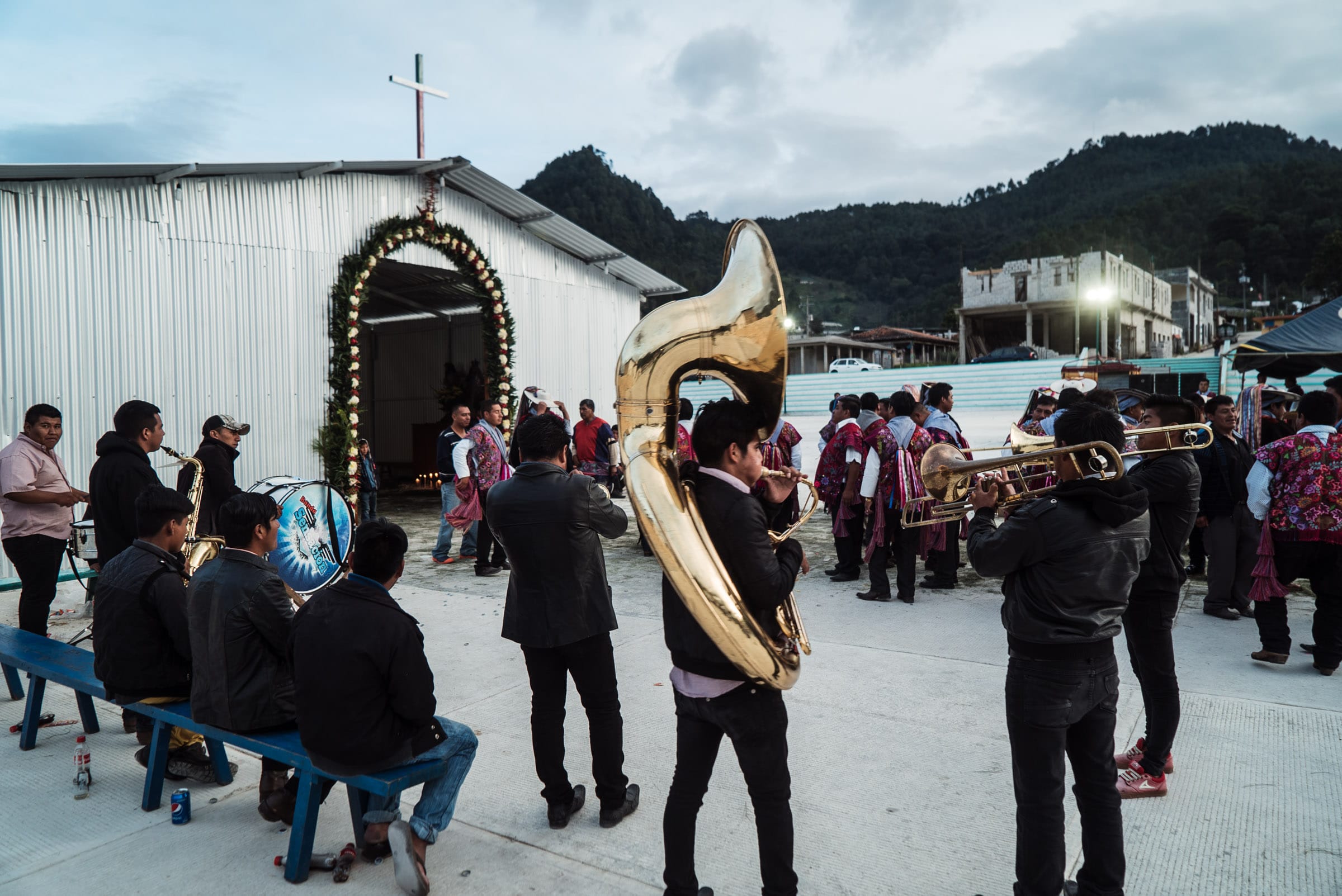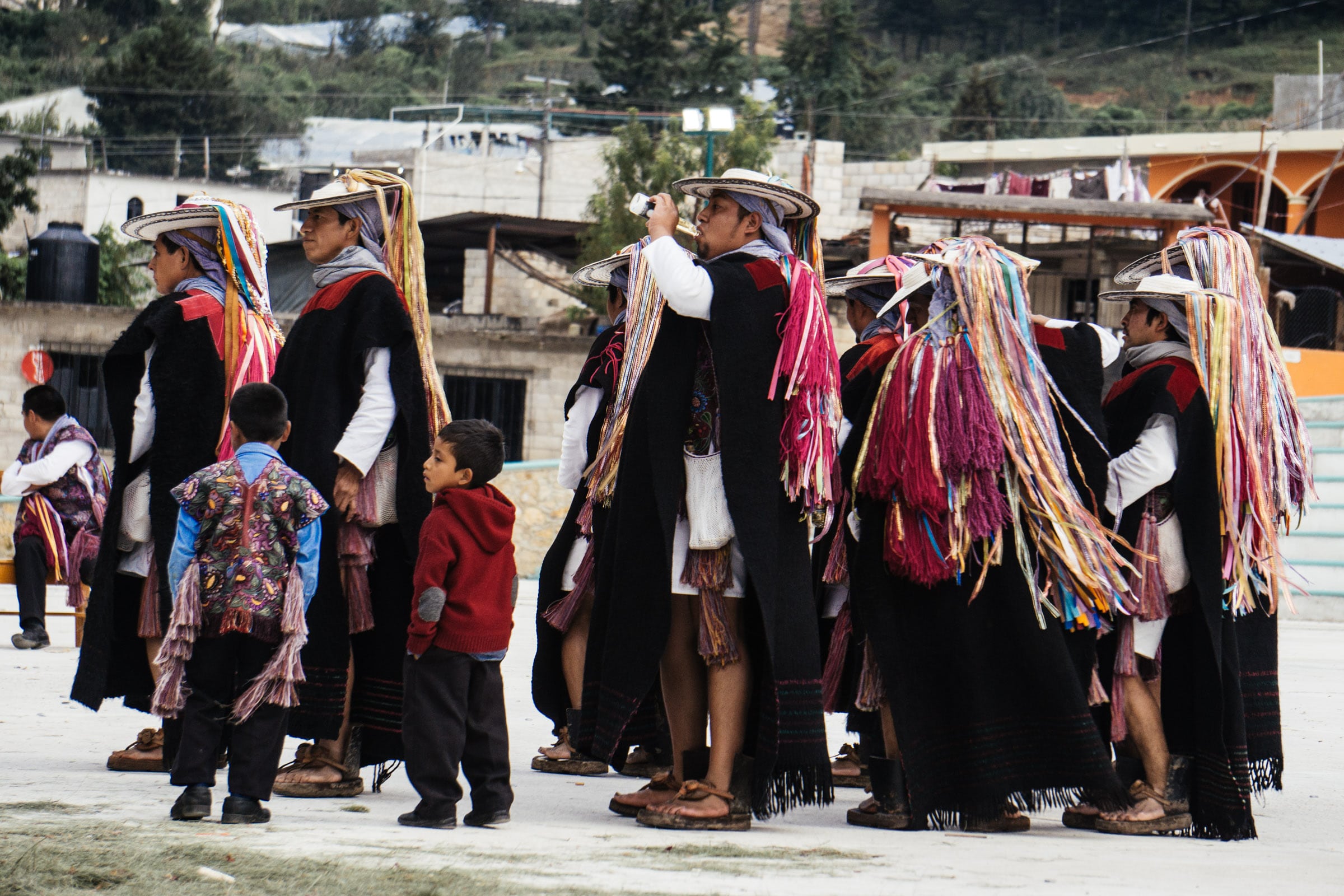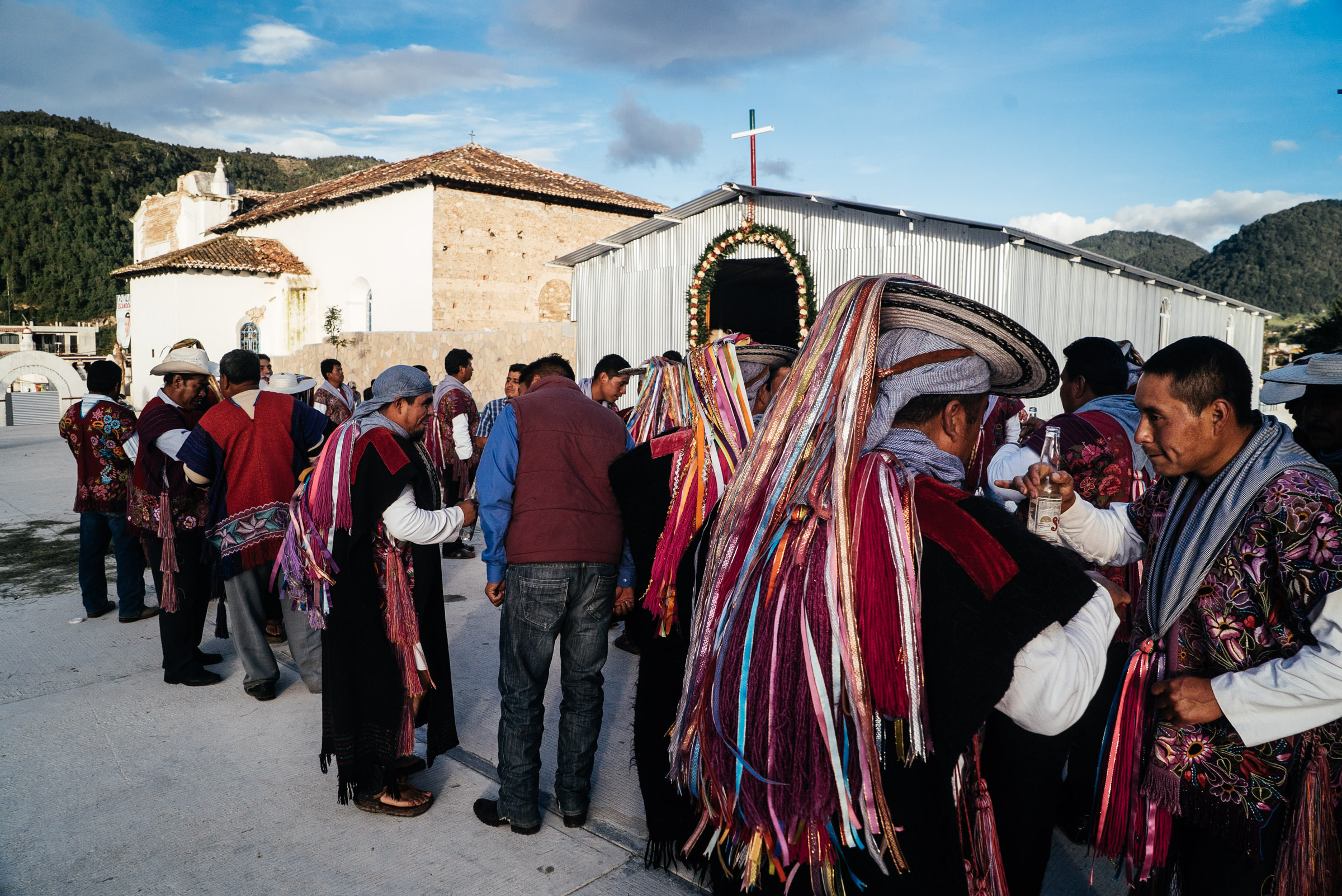A visit to the charming colonial Mexican town San Cristóbal de las Casas is not complete if one does not visit its nearby indigenous villages Zinacantán and Chamula. There is a picture of them in every tourist agency office and tourism brochure. These villages are somewhat different as even today the locals staunchly maintain their authentic culture. I was advised to go there with a tour guide because of the strict local regulations maintained by the indigenous communities. But as I generally like to do things on my own I decided to cycle to the less-strict village Zinacantán by making a detour from San Cristóbal de las Casas.
Zinacantán literally means “the land of bats” in Nahuatl language. Situated only 12 km from San Cristóbal de las Casas in the Chiapas highlands in southern Mexico, its inhabitants are indigenous Tzotzil Maya people. They speak Tzotzil as their native language and Spanish as their second language which they learn at school. Zinacantán and the nearby Chamula towns hold a unique autonomous status in Mexico with their own police force and penal code. Federal police and military are not allowed to enter here. There are many accounts of foreigners getting kicked out or even prisoned for not having obeyed the local regulations in these villages.
On the descent to Zinacantán, I heard the sound of loud crackers exploding in the city and saw smoke in the distance. “There must be something happening here today!”
To get to Zinacantán, one has to cross the hills which surround San Cristóbal from all sides. After an uphill ride followed by a downhill ride into the valley, I arrived in Zinacantán which sits at 2500-m elevation in a valley. On the descent, I heard the sound of loud crackers exploding in the city and saw smoke in the distance. I had already become used to such sounds during my stay in Guatemala and knew that they marked the importance of a feast. “There must be something happening here today!” I thought to myself and rolled into Zinacantán with great anticipation.
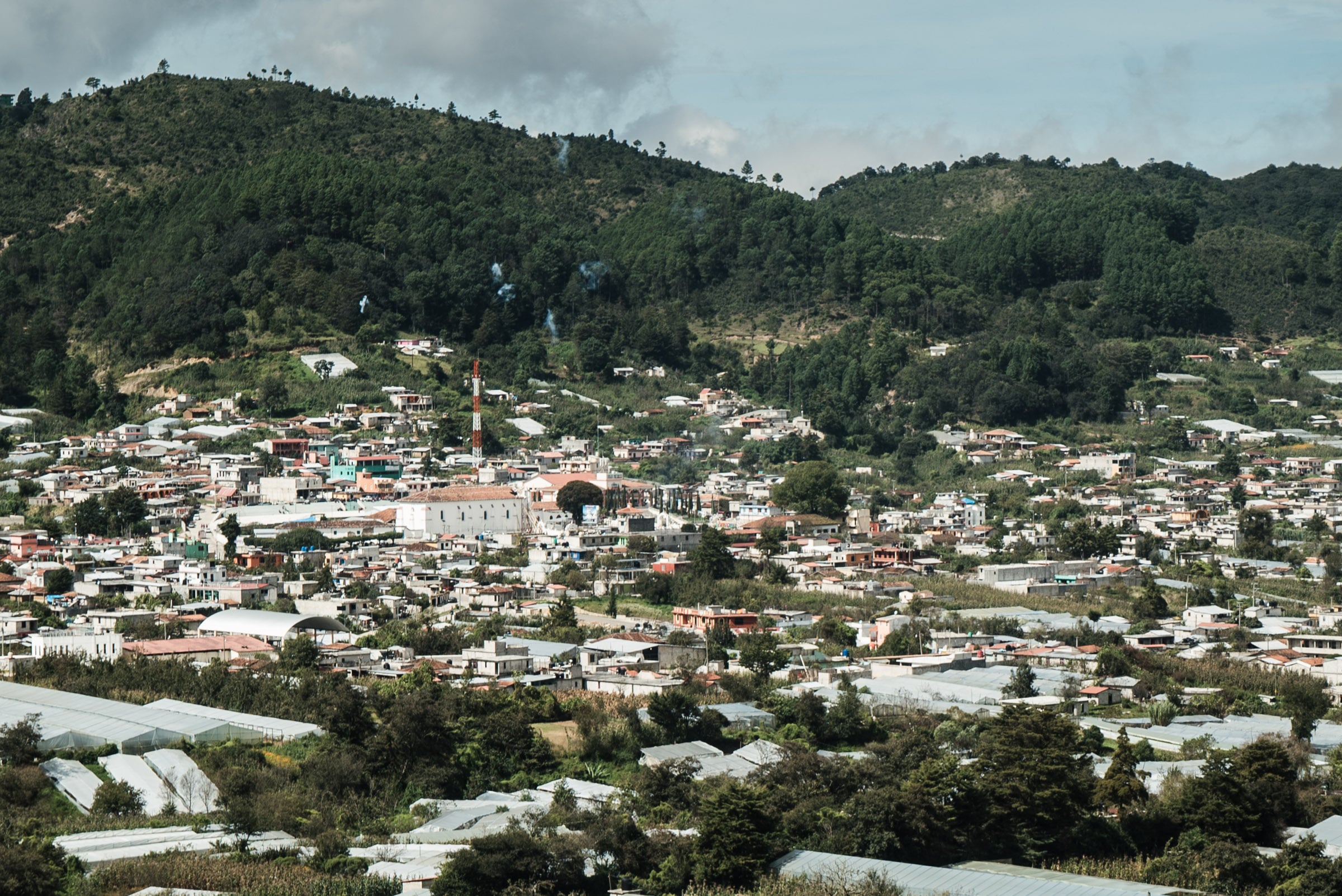
The first thing which struck me in Zinacantán was the way men were dressed; pink tunics embroidered with flower designs and hats with long colourful ribbons. The women wore embroidered blouses and covered their shoulders with pink or purple shawls. Children were dressed likewise. It was a sea of purple, pink and blue clothing. These clothes are not reserved for a special occasion rather they are worn every day.
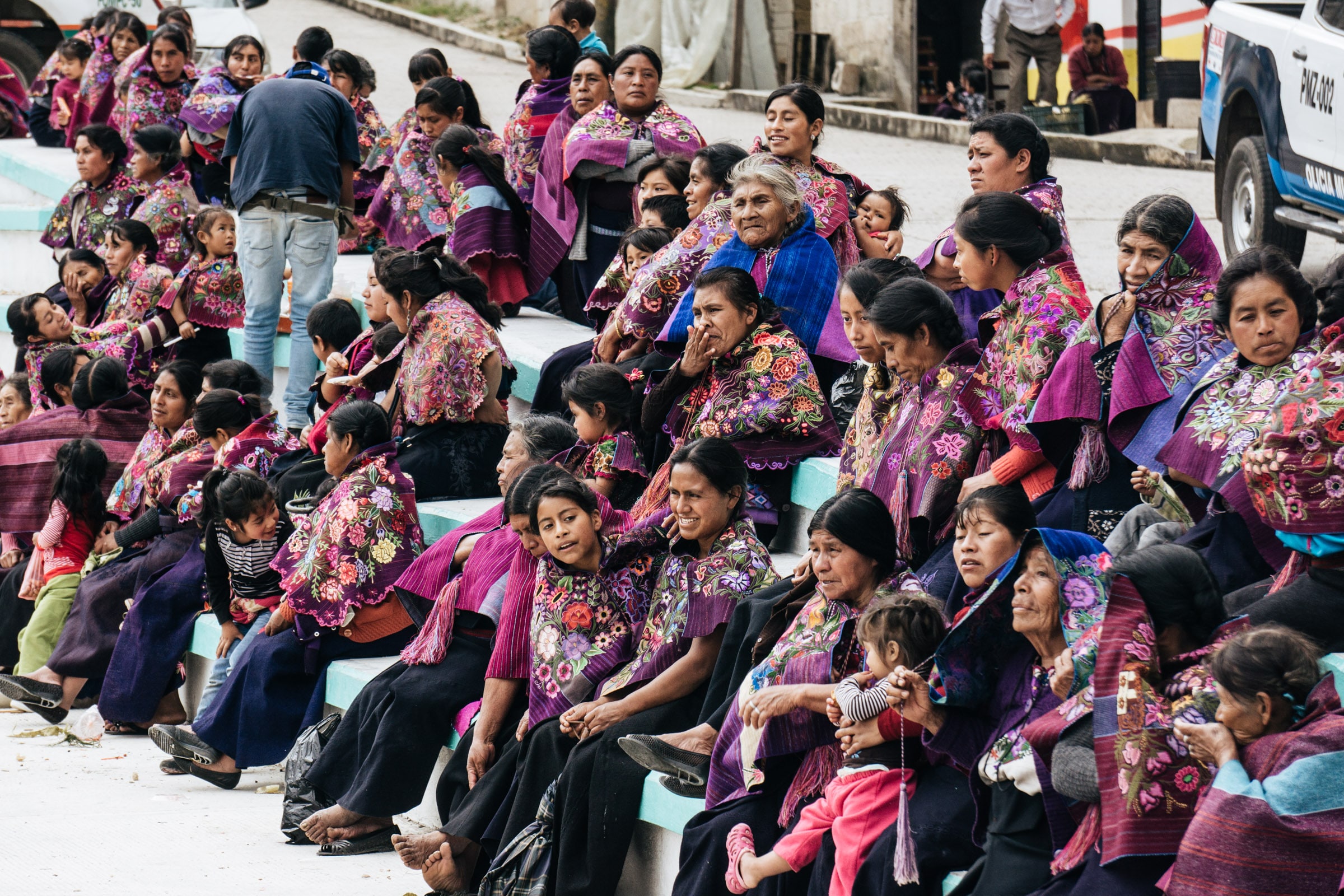
In the central square beside the two main churches, hundreds of people had gathered and the whole valley echoed with live music. Nearby, there was a new tin shack with a cross at the top of the entrance, which suggested it was a church too. The locals brought buckets of flowers, crosses, and images of saints and other decorations into it. Some men wore shorts and white shirts with long black tunics on top and wooden clogs in their feet.
I had come here thinking that I would spend only half an hour and then leave but the scenes were so captivating that I decided to spend more time to know what exactly was happening. I left the bicycle in a nearby shop and paid 20 Pesos to the owner and asked her to watch for it. I took my cameras out of the bags and headed to the church where the action was happening.
The church was lit by thousands of colourful candles. Locals performed rituals with the smoke of copal incense. They adorned the images and dressed up wooden statues of saints with flowers and chanted prayers in native Tzotzil language.
The new church made out of tin looked like a shack with a cross erected on top. Inside, the church was lit by thousands of colourful candles. Locals performed rituals with the smoke of copal incense. They adorned the images and dressed up wooden statues of saints with flowers and chanted prayers in native Tzotzil language. They also placed mirrors next to the saints to deflect the devil. I wondered why this shack was chosen to be the centre stage of a seemingly important religious ceremony when there were two older, bigger and much more impressive churches right next to it.
I asked a few people and was told that the earthquake on 7th September which had shaken the entire Chiapas province had also struck Zinacantán with a magnitude of 8.1 and caused the tower of the huge central church Iglesia de San Lorenzo to tumble.
“When a church is damaged we have to reconstruct it or build a new one with the same name because the spirits of the saints from one church will not enter a different church.”
“There is another church nearby so why construct a new one?” I asked a local Tuk-Tuk driver. “When a church is damaged we have to reconstruct it or build a new one with the same name because the spirits of the saints from one church will not enter a different church.” That’s why they had to build a new church and give it the same name “Iglesia de San Lorenzo” like the one that was damaged. But the new church is only temporary to house the saints until the original Iglesia de San Lorenzo is completely restored. The damaged church will be demolished and newly constructed, a process that is going to take about three to four years and cost several million pesos. There is no hope to receive any help from the government so locals and neighbouring communities will have to contribute funds from their own pockets in order to fully restore the main place of worship in Zinacantán.
There were big cracks in the church building and part of the roof had collapsed rendering the church unsafe for use. Therefore, the locals needed a new church but as they didn’t have enough funds, they built a low-cost tin shack. Today was the opening of this church and hence all the celebrations.
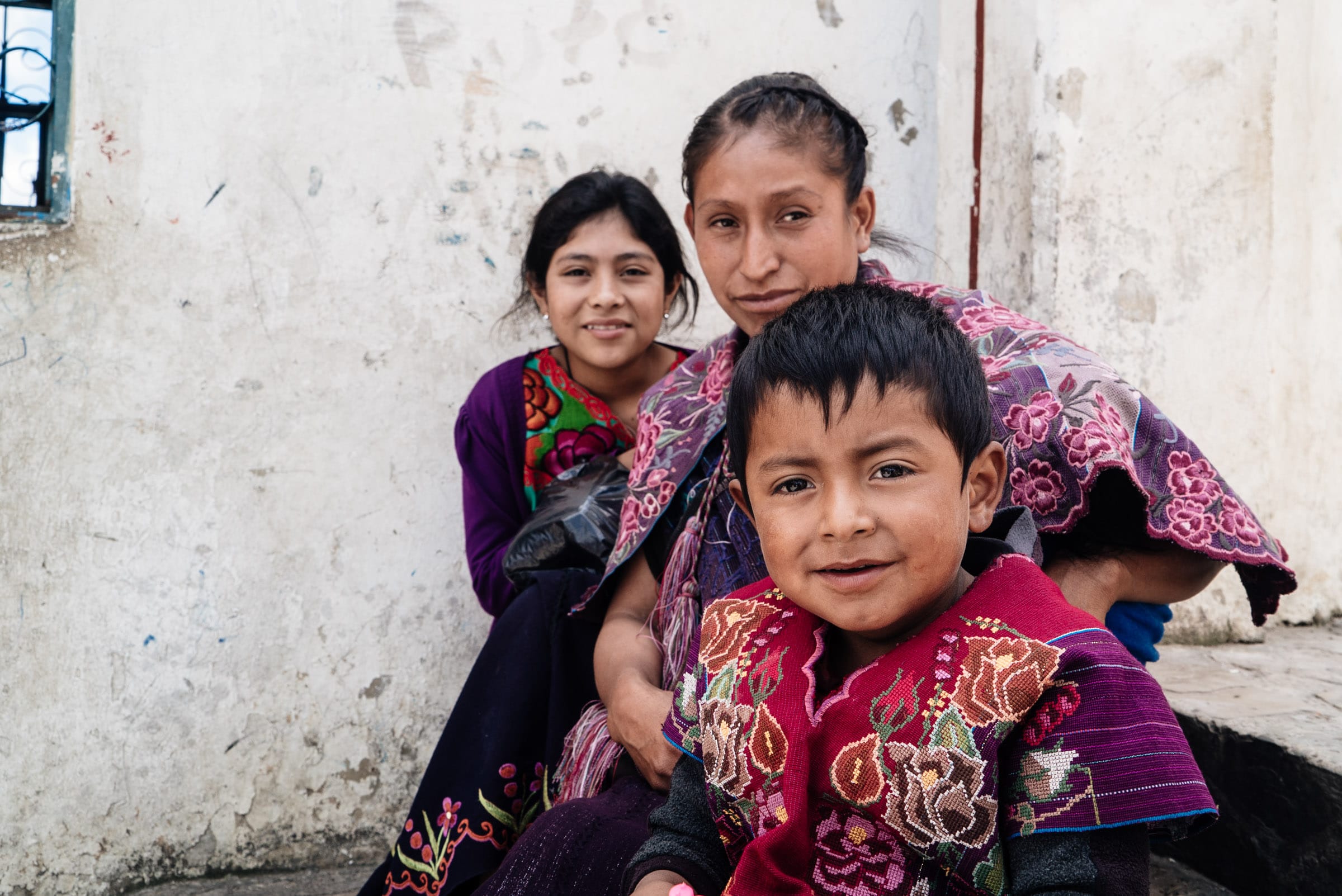
The indigenous community in this part of Mexico is not very open to the outsiders and they particularly don’t like having their pictures taken.
The indigenous communities in this part of Mexico are close-knit. They are not very open to the outsiders and particularly don’t like having their pictures taken. I had experienced this first-hand in San Cristobal and had read warnings about this place as well. I was very careful and tried not poke camera into the people’s faces. Nevertheless, I tried my luck by asking for permission to enter the church with my camera. As expected, it was a big “no, no!” I was told that there was a risk of having my camera confiscated if I attempted to take photos inside the church.
Worshippers drink Coca-Cola to burp which they consider as a way to expel evil spirits from their bod and consume an abundant amount of pox or beer to get drunk.
After the Spanish conquest in the 16th Century, the Mayan population adopted Christianity as their religion but they practice their own version of Catholicism which blends centuries-old Mayan customs and religious rituals that are sometimes not even endorsed by the Catholic Church. For example, smoking a cigarette or alcohol abuse is part of the religious processions in this part of the world. In Zinacantán and a nearby village Chamula, the worshippers drink Coca-Cola to burp which they consider as a way to expel evil spirits from their body. Men take the opportunity of fiesta to consume an abundant amount of pox or beer to get drunk. Just imagine the opening ceremony of a church and a bunch of men in traditional costumes who are dancing to live music with a bottle of beer or pox in one hand and a cigarette in the other. It is a religious ceremony like no other.
The men were in charge of all the proceedings. While they brought flowers and decorated the church, played music and marched through the streets, consumed alcohol until they became drunk and danced with tottering feet, the women merely observed from the stairs of the central square. Later when the church was empty because men left to dance outside, the women entered the church to light a candle and prayed in silence.
As the ceremony continued, the devotees would explode crackers or fire rockets in the air once in a while to scare the evil spirits off. I was sitting next to an old man and asked him, “how long will this fiesta go on?” He had a poor hearing. I repeated my question but he didn’t understand. I first pointed to the people dancing outside the church and then to an imaginary watch on my wrist. He said, “oh”, and then looked at his watch and said, “2:30”, which was the current time.
I was told by someone that the ceremony was going to last until the evening. As it all looked so otherworldly I wanted to see it until the end, and that meant that I needed a place to stay there. I asked around and was directed to the only rental accommodation, a posada, in the village. For 150 Pesos, I got a clean room. I picked up my bicycle from the shop where I had left it and cycled to the posada. After securing my belongings in the room I walked back to the new church.
“You are the “primo de (cousin of) Bin Laden!”
At the event, there were street vendors selling ice-cream, coconut, and various types of crisps. I bought a sliced coconut which was served with hot chilli sauce. During the whole day, I spotted only about 10 tourists who would come, hang out for a short time and then leave. No one stayed on. For most of the time, I was the only foreigner in the town and could be easily singled out. Although the locals were somewhat reserved, I didn’t get the feeling of being regarded with suspicion, something which had been mentioned on several blogs. Women and children looked at me with curious eyes and smiles. Everyone whom I talked to wanted to know where I come from and almost everyone whom I told that I am from Pakistan came up with a comment; “There is a war going on in Pakistan, no?” They didn’t know the location of Pakistan and would confuse Pakistan with Afghanistan but they had heard a lot of bad news on the TV. One even jokingly called me “primo de (cousin of) Bin Laden!” It has been the story of my entire journey; even in the remotest regions people have sadly had this impression of Pakistan. I try to correct them as much as I can and after discussing with them it seems they tend to agree to the fact that good and bad people exist everywhere and that every country has its own problems and not everywhere in a country is safe.
I took a break from the proceedings at the church and visited a local artisan woman who was weaving textile outside her shop. She welcomed me to take her pictures before I even asked to do so. I took some shots and gave her few pesos as a tip. Thereafter I had a long chat with her. She told me how her entire house was shaking during the 7th September earthquake. She was very curious to know about Pakistan and the life over there. I shared with her my knowledge about the geography of Pakistan, the climate, the religions and languages of Pakistan. She appreciated it a lot. When I was leaving, she recommended that I should go check the local cemetery (panteón). Upon her advice, I hired a Tuk-Tuk (moto taxi) and went to the cemetery which was located on top of a nearby hill.
It was a steep uphill drive to the cemetery even for the new Tuk-Tuk which its owner had recently bought for 70,000 Pesos. Despite the harsh sunlight, it was chilly up there. The cemetery was quite big and colourful. The graves of old men were painted black, the graves of young people were white, and for other ages, different colours had been used. Some graves had temples or tombs constructed upon them. Inside, those tiny tombs, there were pictures of the dead. Some people had left sealed bottles of Coca-Cola on the graves. The bottles had been there for such a long time that the labels of the bottles and the contents inside had faded out.
The return journey to the cemetery by Tuk-Tuk, including a 30-minute wait, cost me 60 Pesos. I was dropped back at the town centre. I had not taken breakfast or lunch so had a meal for 50 Pesos at a family restaurant and then spent some a couple of more hours in front of the church where the celebrations continued but there were far fewer people.
“Photography is prohibited in the chruch but if you don’t use a flash and if nobody notices you then just go and take some photos!”
Early in the evening, when everyone was busy drinking and dancing, a local at the entrance of the church noticed the camera hanging on my shoulder and asked if I would like to take pictures inside the church? “Can I?” I asked with surprise. He said, “it is prohibited but if you don’t use a flash and if nobody notices you then just go and take some photos as a memory.” I gathered some courage, went inside the church, quickly grabbed some shots and returned before anyone noticed me.
Inside the church, there were no rows of pews but a floor covered with pine-needles, the air was thick with clouds of copal incense and smoke from thousands of candles. The worshippers, mostly women, kneeled quietly before the statutes and images of saints. It was a stark difference to what was happening outside where after every song, the men danced and drank themselves into oblivion.
“Hey you! You have to pay 5000 Pesos as a fine for taking pictures!”
Outside, I was caught red-handed a few times while taking pictures. Once a man who was fully drunk asked me to dance with him and then during the conversation told me that I needed to get permission for photography. I asked, “from whom?” He whispered into my ear, “from anyone” and then went back to dance.
On another occasion, a man who was also dancing yelled at me, “hey you! You have to pay 5000 Pesos as a fine for taking pictures!” I replied, “I don’t have so much money” with a sad face. He laughed and continued dancing. After it had become dark and I was becoming bolder and bolder in taking photos, a gentleman approached me, engaged in conversation and then politely asked if I had the necessary authorisation from the municipal office to take pictures? I said, “sorry, but I didn’t know about that!” He said it was a must. It would be fair to say that I had been tolerated enough, so I apologised to him and then left.
I returned to the hotel thinking that I had only planned to briefly pass through this town but ended up seeing this amazing ceremony by chance. Someone recently commented on my Facebook post that wherever I go, something is happening. Well, though it is not always the case, it was certainly true today!



